Bravia 8 XR80 is the only OLED model from Sony released in 2024 that will undoubtedly catch the attention of image quality enthusiasts. The television offers excellent picture quality with the deep blacks, vibrant colours, and infinite contrast characteristic of OLED. This makes every scene incredibly realistic. Thanks to OLED technology, dark scenes look perfect, and the reproduction of blacks as well as bright elements stand out with great detail. This creates an amazing effect – a cinematic experience. While watching sport or dynamic films, we particularly appreciated the smoothness of the image. The 120 Hz panel performs excellently – no issues with motion blur, even in the most dynamic moments. This is a television that truly excels in situations where fast action and distinct details matter. The Google TV system is another strong point of the Bravia 8. The interface is simple, clear, and easy to use. We had no trouble finding all the popular applications, such as Netflix, YouTube, or Prime Video. The USB-C rechargeable remote is a nice addition – it feels good in the hand, and the backlighting proved essential during evening use of the TV. Of course, not everything was perfect. The SDR brightness of 330 nits is a figure that doesn't impress, especially in well-lit rooms. This model does much better in the evenings, in more dimly lit conditions. We also noticed that the colour gradation is slightly worse than in previous Sony models – this is a very strange move considering that Japanese manufacturers were always known for their excellent digital processing. Another limitation is only having two HDMI 2.1 ports (including eARC) – with a larger number of devices, such as two consoles and a soundbar, this becomes a problem. Despite these minor drawbacks, the Bravia 8 XR80 is a great television that is suitable for both everyday use and evening viewing sessions. Excellent picture quality, smooth motion, and an intuitive Google TV system make for a combination that makes a difference. If you’re looking for a decent OLED in 2024, this model is definitely worth considering.
- Matching (Score)
- Our verdict
- TV appearance
- Where to buy
- Contrast and black detail
- HDR effect quality
- Factory color reproduction
- Color reproduction after calibration
- Smoothness of tonal transitions
- Image scaling and smoothness of tonal transitions
- Blur and motion smoothness
- Console compatibility and gaming features
- Input lag
- Compatibility with PC
- Viewing angles
- TV efficiency during daytime
- Details about the matrix
- TV features
- Apps
- Playing files from USB
- Sound
Sony Bravia 8 (XR80) vs Samsung QN85F
Direct compare
BRAVIA 8 / XR80
QN85F

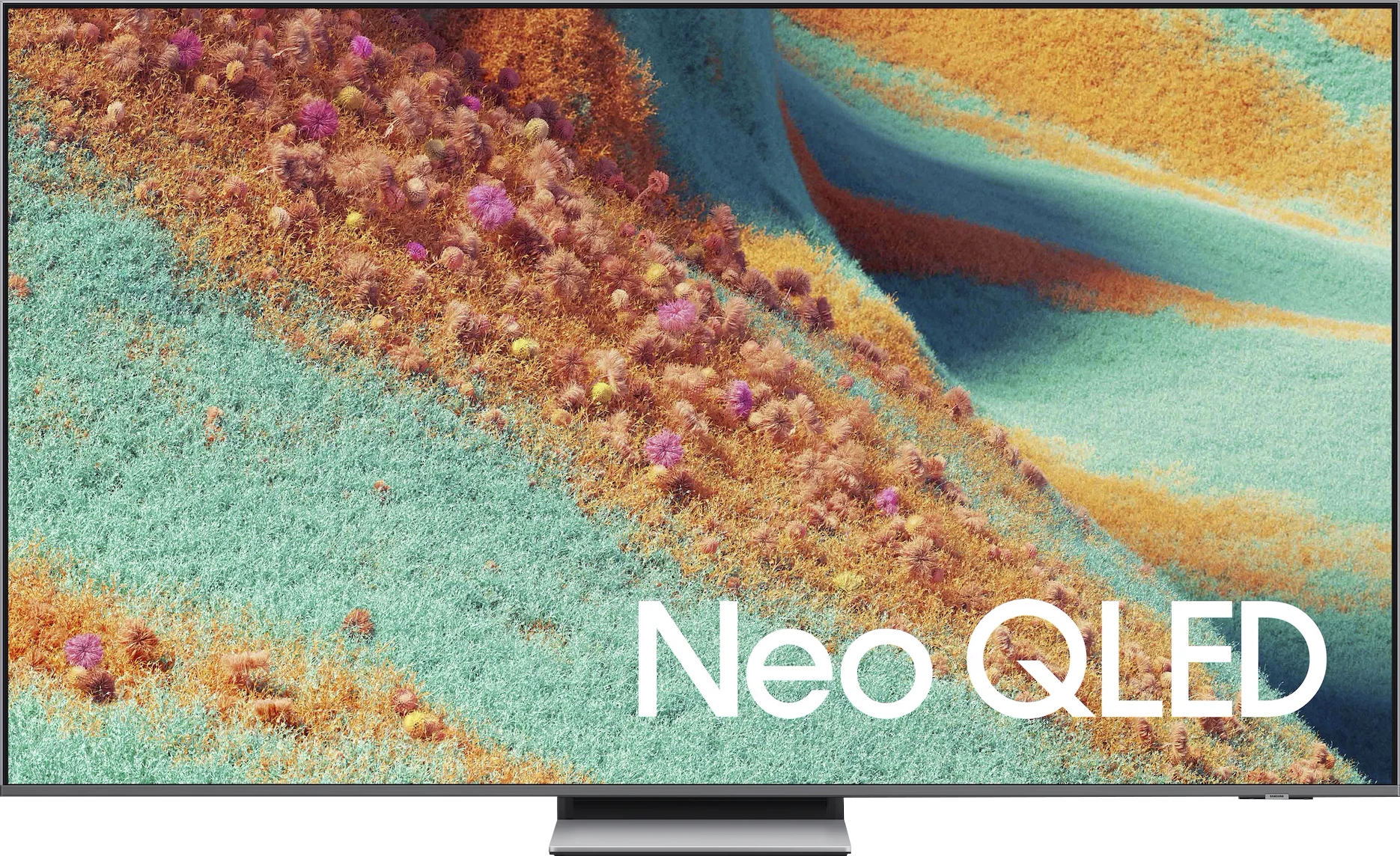
Panel type: WRGB OLED
Resolution: 3840x2160
System: Google TV
Model year: 2024
Complete the survey to find out the result

Panel type: LCD VA
Resolution: 3840x2160
System: Tizen
Model year: 2025
Complete the survey to find out the result

Overall rating
7.8
7.6
Movies and series in UHD quality
7.6
7.5
Classic TV, YouTube
8.0
7.2
Sports broadcasts (TV and apps)
8.1
7.0
Gaming on console
8.8
8.7
TV as a computer monitor
7.6
8.4
Watching in bright light
5.6
6.9
Utility functions
9.4
7.3
Apps
9.6
8.7
Sound quality
7.5
7.6
Complete the survey to find out what fits your preferences
Advantages
Exquisite contrast
Google TV – intuitive system, easy access to apps, backlit remote.
Very good motion smoothness – 120 Hz, advanced motion smoothing system.
Excellent support for Dolby Vision
Very good viewing angles
Superb built-in audio system
High HDR brightness (even 1700–1800 nits)
Very good contrast and deep blacks
2 times the number of dimming zones compared to its predecessor (55")
144 Hz panel supporting VRR and ALLM
Unique Game Motion Plus feature – a distinctive smoother for gaming
Low input lag
Satin finish on the panel works great during the day combined with high brightness
Advanced Tizen platform: with AirPlay, SmartThings, and a convenient solar remote
Well-designed stand. Hybrid – can be a central base or side legs
Solid sound with pleasant bass and Dolby Atmos support
Disadvantages
Poor gradation – visible transitions on dark and light colours
Brightness during the day – better for night-time viewing than for use in daylight
Only 2 HDMI 2.1 ports - including one ARC.
No support for Dolby Vision and DTS:X
No recording function from built-in tuners and PiP
Issue with HEIC files in the player
No proper HGiG* support in game mode
*This seems to be an update bug that we hope Samsung will fix quickly. We're keeping an eye on the situation for you.
Our verdict
The Samsung QN85F is a television that perfectly demonstrates the purpose of the Neo QLED line. On one hand, it has everything that a modern user expects – high brightness, excellent fluidity, and full support for gamers. On the other, it’s still an LCD, so it’s a technology that comes with certain compromises. The question is whether these compromises actually hinder everyday use? In practice, it’s hard not to be impressed by how the QN85F performs with HDR movies. A brightness level of 1700–1800 nits makes watching dynamic scenes truly feel like experiencing the “HDR spark,” which many competitive televisions lack. The lighting effects in films or series can literally overwhelm with intensity, yet the television doesn’t lose detail and doesn’t turn the entire image into a washed-out blob. This is precisely the kind of spectacular experience that viewers investing in a new screen are searching for. Gamers also have reasons to be pleased. (Well, maybe apart from one shortcoming related to HGIG.) It supports 144 Hz, variable refresh rate VRR, and automatic game mode ALLM. This is already a must-have set in this class, but Samsung goes further by adding a unique feature called Game Motion Plus. Thanks to this, the image in games becomes smoother, resembling the operation of a motion smoother in films, but without a noticeable increase in latency. This solution truly sets the QN85F apart from the competition. On top of all this, there’s everyday convenience. The Tizen system is fast, stable, and full of apps that we actually use – from Netflix to Apple TV to YouTube and Disney+. There’s also AirPlay support, a comprehensive SmartThings platform, and a remote that, instead of being intimidating with dozens of buttons, offers simple navigation and quick access to the most important functions. This makes the QN85F a television that you just want to reach for every day. Sure, you can point out the shortcomings. There’s no Dolby Vision, no USB recording, and the viewing angles typical of a VA panel won't impress if you sit at a steep angle. But all of this pales in comparison to how versatile and refined the QN85F is. During the day, it handles bright rooms excellently, in the evening it delivers cinematic emotions in HDR, and in games, it provides smoothness and low input lag that other models could envy. Overall, the QN85F is a television that not only successfully continues the value-for-money tradition of its predecessor, the QN85D, but even expands it with several strong points. It’s equipment that’s hard to describe in any other way than as a “safe choice” – one that won’t disappoint in any scenario and is very likely to meet the expectations of even the most demanding users.
TV appearance




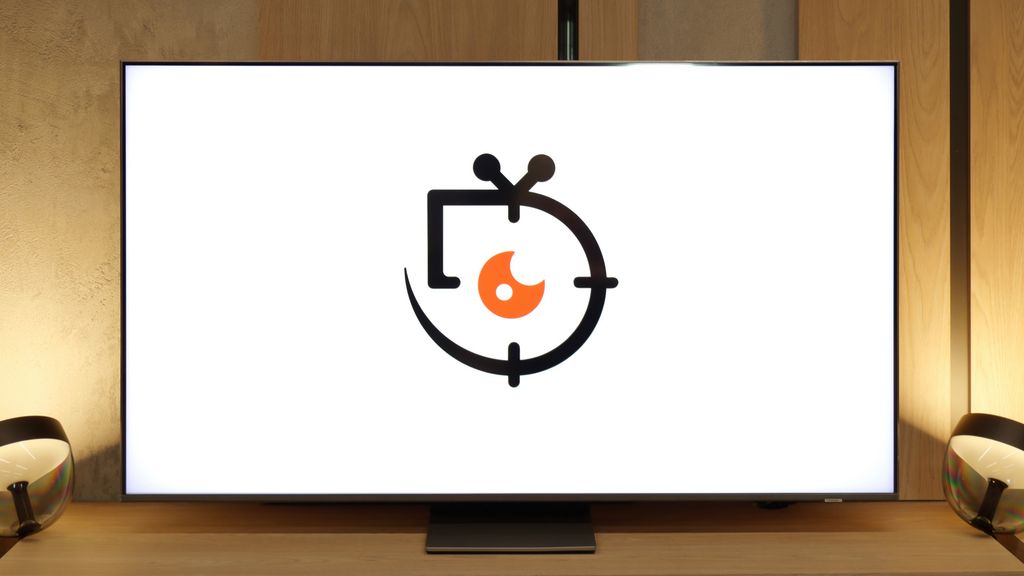
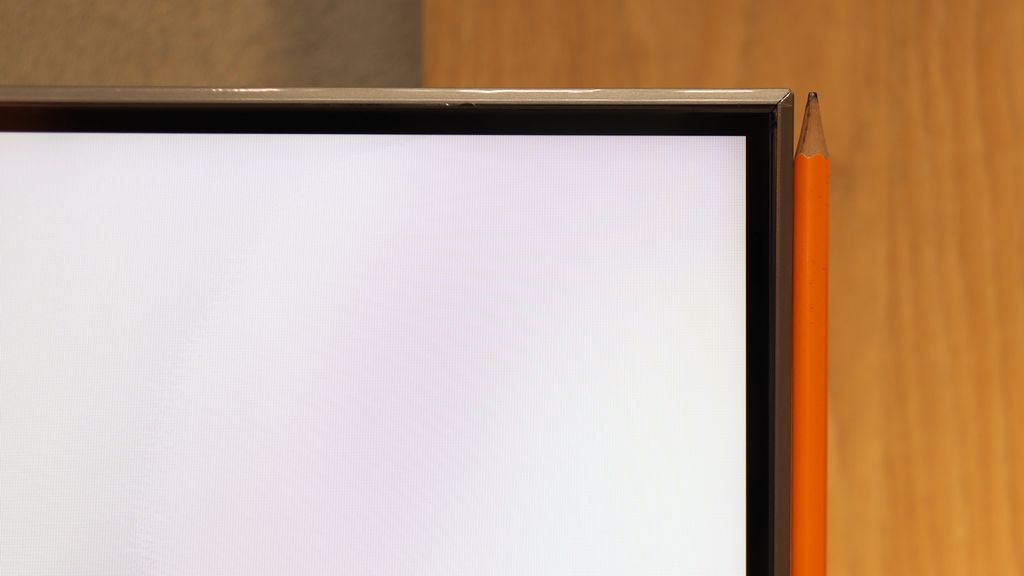
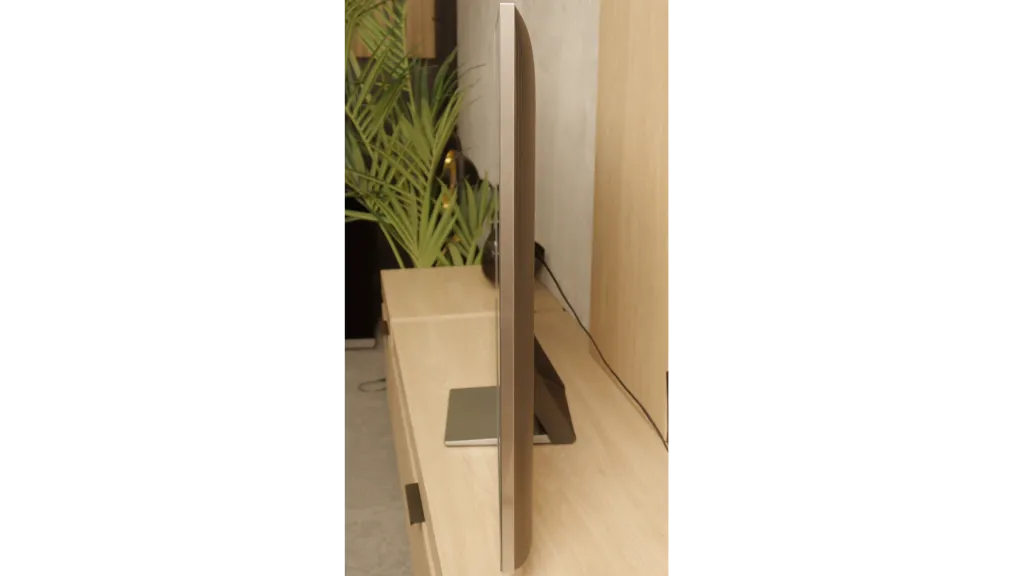
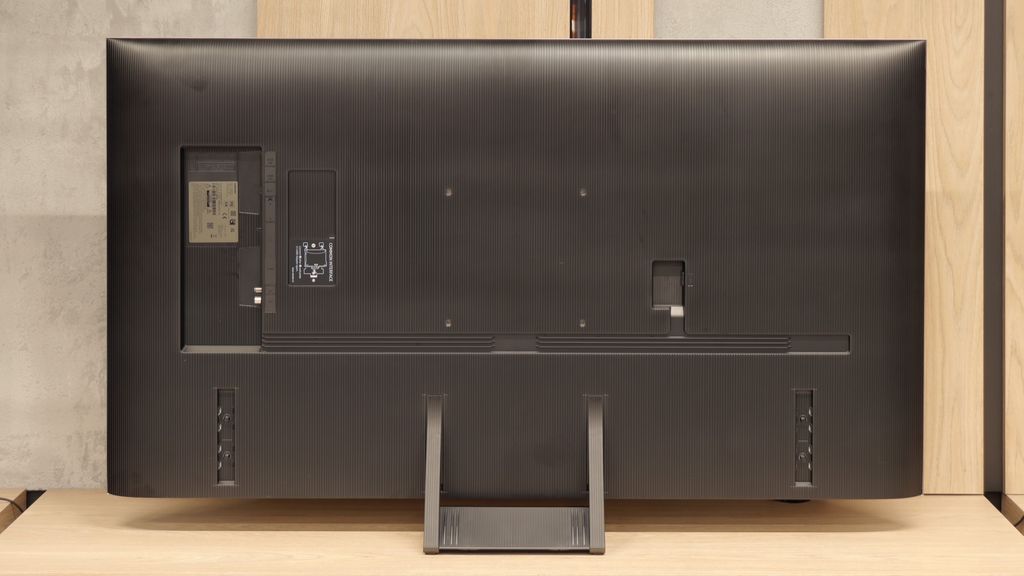
Contrast and black detail
10/10
7.5/10
Local dimming function: Yes, number of zones: 240 (20 x 12)
Contrast:

Result
∞:1

Result
∞:1

Result
∞:1

Result
∞:1

Result
∞:1

Result
101,800:1

Result
18,650:1

Result
47,050:1

Result
9,700:1

Result
4,350:1
Halo effect and black detail visibility:

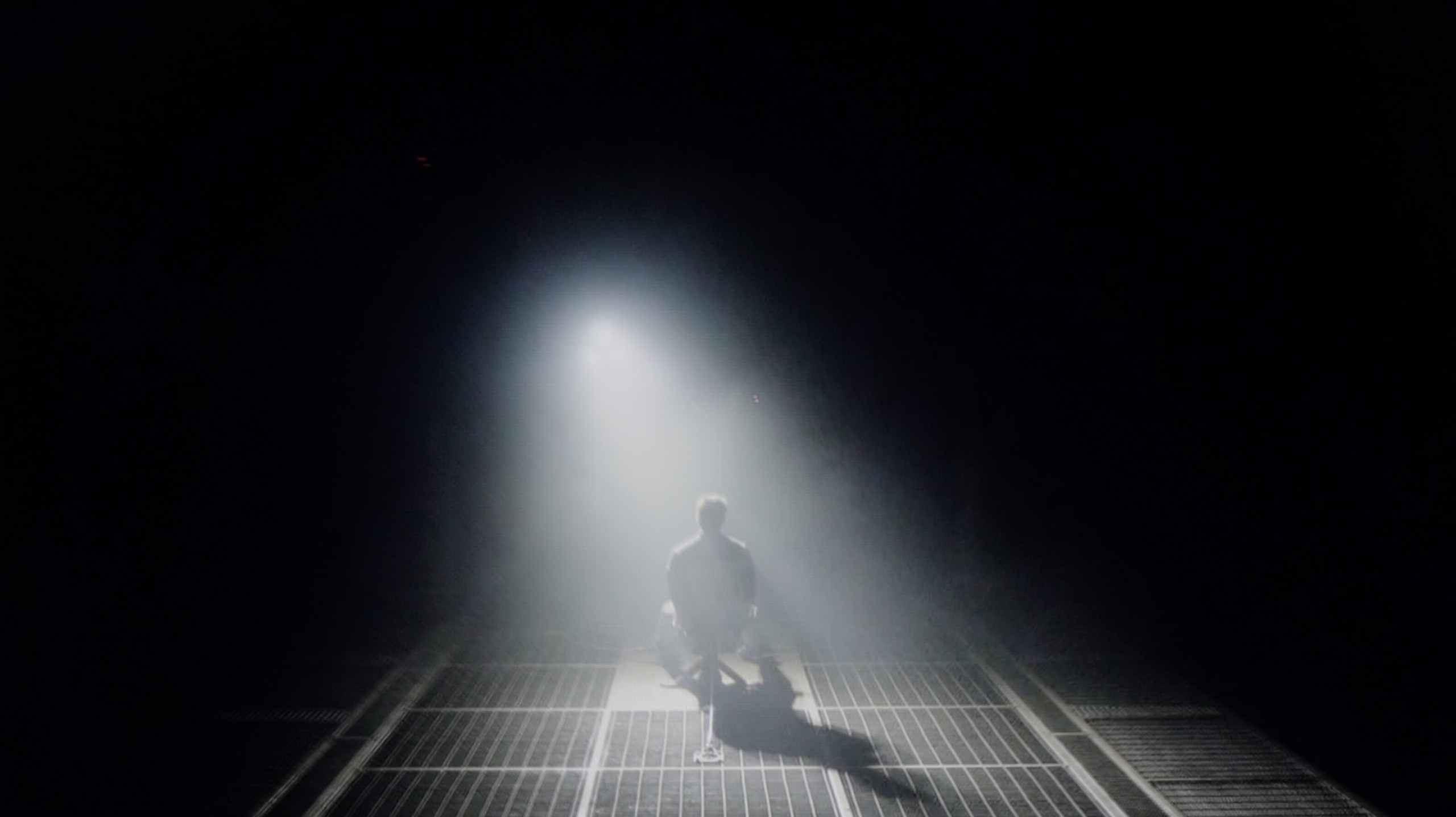
The Sony Bravia 8 television, equipped with an OLED panel, offers exceptional black and contrast quality. Thanks to OLED technology, each pixel emits its own light, providing perfect black depth and precision in light reproduction. On the tested scenes, such as those from the movie Oblivion and Sicario 2, the television achieves ideal light separation, resulting in a highly detailed and realistic image, even in challenging contrast conditions. The Sony Bravia 8 truly stands out from other models in this category.
Our editorial team received a 55-inch model with a VA panel. In the case of NeoQLEDs, which are TVs with Mini-LED backlighting, size is crucial because the larger the screen, the more local dimming zones it can have. This directly translates to higher contrast. In the version we tested, we counted as many as 240 dimming zones, which is twice as many as last year's QN85D. Theoretically, such an increase should deliver an equally impressive improvement in contrast. Unfortunately, practice showed otherwise – the QN85F delivers results very close to its predecessor. Yes, in some scenes with a lot of black or in areas where details in highlights are crucial, there is a noticeable improvement, but it is not proportional to the number of zones. The Mini-LED technology can be temperamental, and sometimes delicate halos appear around small, bright objects. This is a typical compromise that one must accept with such a solution. However, this doesn’t change the fact that the contrast in the QN85F is at a very high level and will easily satisfy most users, even the more demanding ones. However, we have the impression that Samsung could fine-tune the algorithms controlling the dimming because we know from experience that they can perform really well in other models.
HDR effect quality
6.8/10
6.9/10
Luminance measurements in HDR:

Result
849 nit

Result
865 nit

Result
888 nit

Result
880 nit

Result
469 nit

Result
1248 nit

Result
860 nit

Result
1093 nit

Result
465 nit

Result
957 nit
Scene from the movie “Pan” (about 2800 nits)

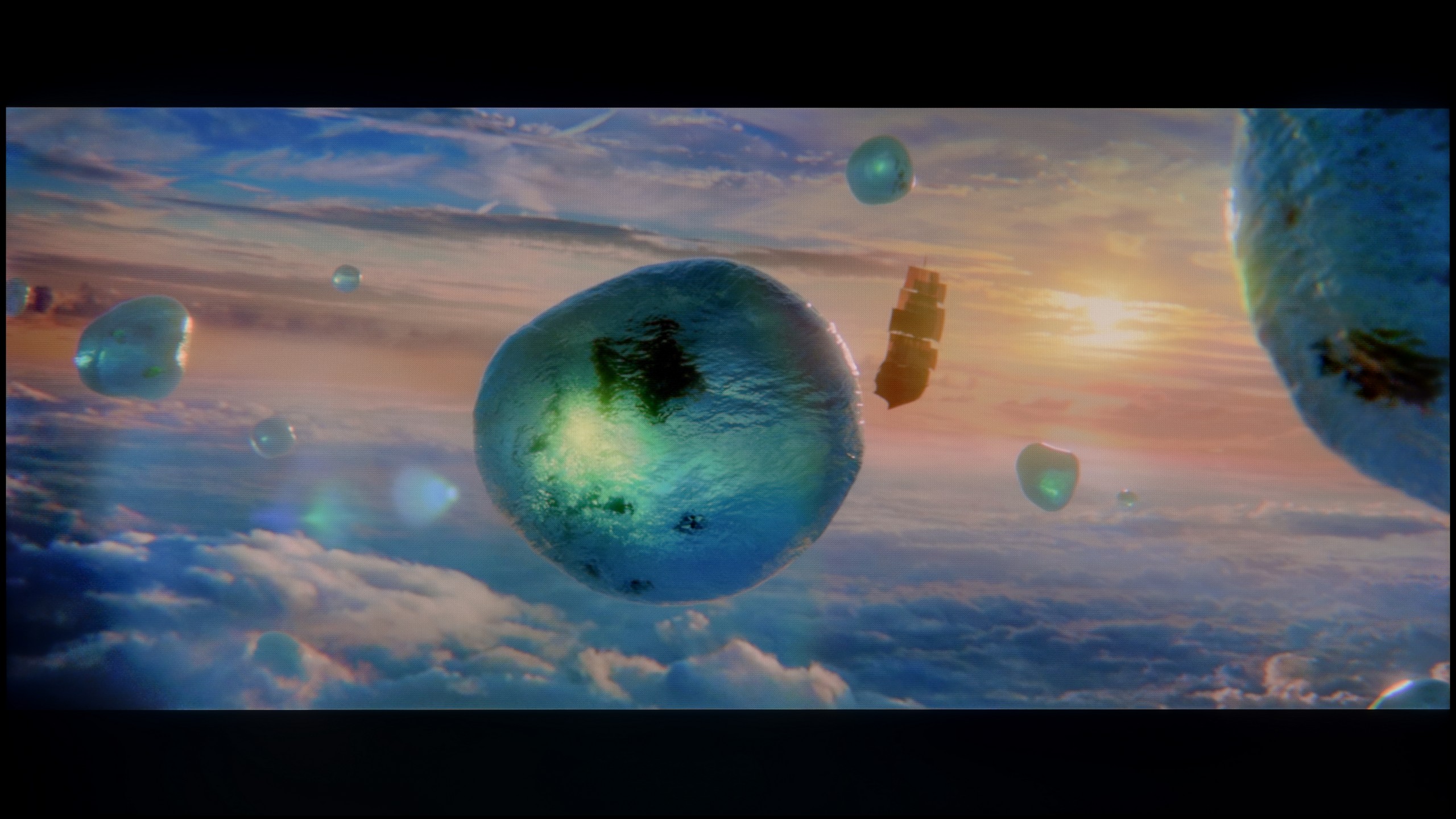
Scene from the movie “Billy Lynn” (about 1100 nits)

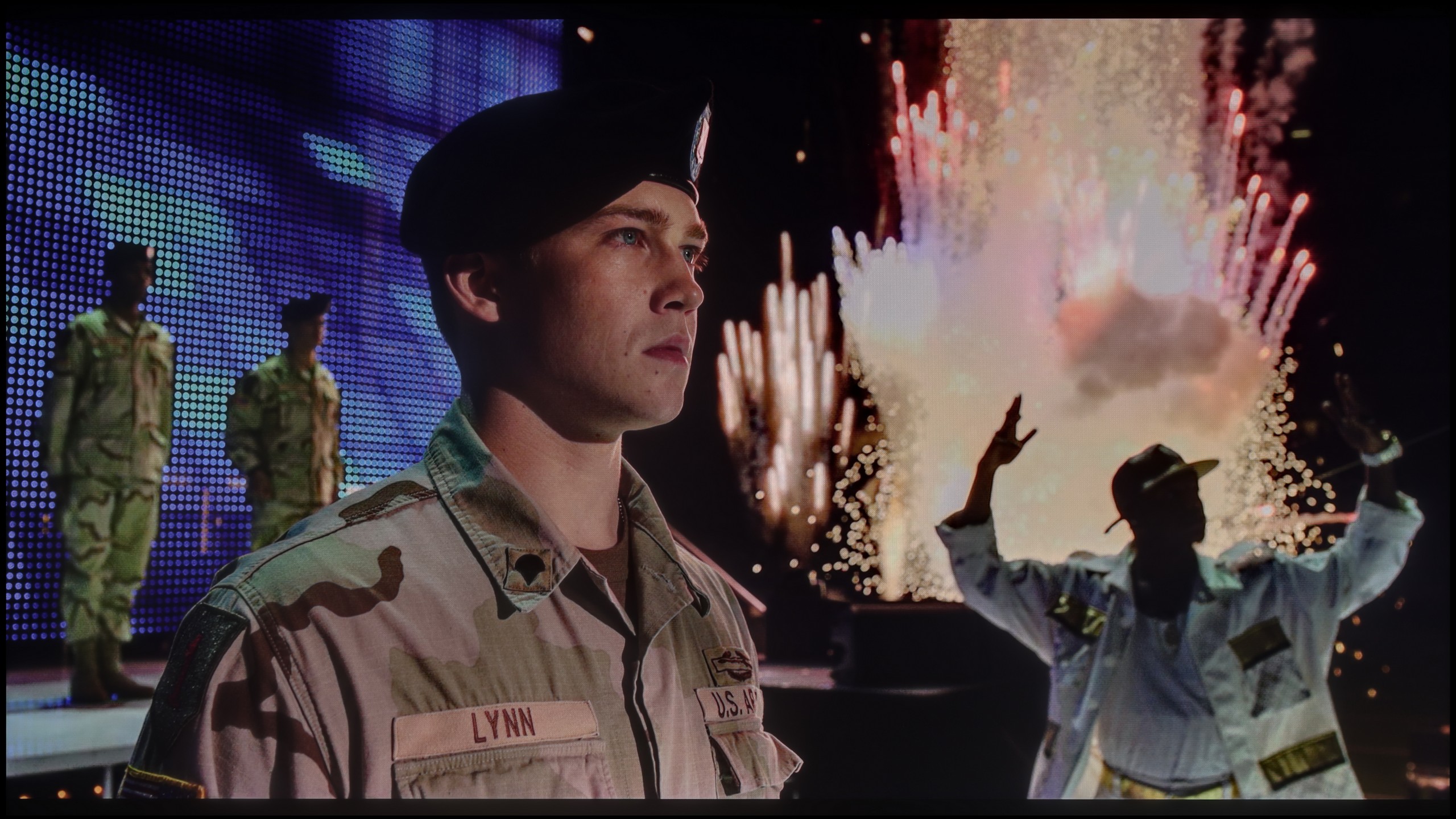
Static HDR10


Dynamic: Dolby Vision
Dynamic: HDR10+


HDR luminance chart:
Samsung QN85F
HDR luminance
Sony Bravia 8 (XR80)
HDR luminance
Luminance of RGB colors
Sony Bravia 8 performs reasonably well in terms of HDR brightness. A maximum brightness level of 880 nits is satisfactory and allows for well-rendered lighting effects in most scenes. In the tested segments of the films Life of Pi and Sicario 2, the TV presents itself quite well, offering vibrant and detailed images that fully capture the atmosphere of these productions.
However, a greater challenge arises in a scene from the film The Meg, where the screen is entirely very bright. In such situations, the limitations of OLED technology become apparent, as the TV loses brightness, dropping to around 450 nits. Such a drop is less satisfying, especially when the entire scene requires intense lighting. Despite these limitations, Sony Bravia 8 remains a competitive model, offering excellent coverage of the DCI-P3 colour gamut and 74% coverage of the BT.2020 standard. This results in rich colours and precise details, significantly enhancing the quality of HDR content viewing and making for a pleasurable experience.
Although more than twice the number of dimming zones compared to its predecessor did not result in a spectacular leap in black levels and contrast, we definitely felt it in the HDR effect itself. The QN85F is up to 50% brighter than last year's model and it makes a huge impression in dynamic scenes. Peak brightness can reach almost 1700–1800 nits, which is an impressively high result for this Mini-LED class. The best part is that almost regardless of the scene being watched, the HDR effect remains strong and vibrant. In four out of five test scenes, brightness was maintained around 1000 nits, a level that in most cases allows the viewer to feel the true magic of this format. Of course, in scene number 4 from the film Sicario 2, the limitations of Mini-LED technology become apparent – the brightness of the helicopter's subtle light drops to around 500 nits. This isn't an outstanding result, but it is still much more acceptable than last year's model. Samsung deserves applause for the dramatic improvement in brightness with the QN85F compared to its predecessor. However, there's a certain trend visible in this year's televisions – the manufacturer has worsened colour gamut coverage. Although the QN85F has a QLED panel, its result at around 90% DCI-P3 is average, and in the most demanding films, it may lead to less vibrant colours than its predecessor. Despite this drawback, the overall HDR effect is at an excellent level and truly makes a big impression in this class of devices.
Factory color reproduction
7.2/10
4.8/10


Factory Mode
After calibration


Factory Mode
After calibration
The best factory mode available on the Sony Bravia 8 television is IMAX Enhanced, which provides the most cinematic experience, although it is not set up perfectly. The TV tries to replicate cinema settings as faithfully as possible, however, certain shortcomings are noticeable. Starting with white balance, both for SDR materials and 4K, there is a clear dominance of blue. This makes the picture appear too cold, taking away its naturalness. Tests using Colour Checker show that colours shift towards cooler shades, which may lead to less accurate colour reproduction and makes the image less realistic.
As for brightness and contrast characteristics, gamma shows a significant drop at the end of the graph. This means that dark details may be too dim, while bright elements are too bright, causing them to lose subtlety and become less visible. As can be seen in the sky - in the comparison photo. Meanwhile, the EOTF curve is significantly above the reference value, causing the bright elements of the image to be too intense. As a result, users may perceive the image as unnatural, and bright areas may lose detail, negatively impacting the overall viewing quality.
Samsung QN85F offers several preset picture modes, but out of the box, the television starts in 'Eco' mode. We could almost end the discussion here, as using this setting on such a model makes little sense – the picture is washed out, unpleasant, and far from what we expect from a television of this class. Therefore, we conducted our tests in the best available mode, which is Filmmaker mode. Its purpose is to faithfully reproduce what the directors saw during filming, and indeed, it is the setting that performs best among all factory options. However, this doesn't mean it's free from flaws.
Both in SDR and HDR, the QN85F prominently highlighted warm colours. This was due to a lack of white balance, where the blue colour was noticeably absent. Additionally, the image was sometimes overexposed – both the gamma brightness characteristic and the EOTF curve indicated that the television has a tendency to blow out scenes. In SDR, colour reproduction errors (Delta E around 4–5) were still acceptable, but in HDR, the inaccuracies became quite significant and clearly deviated from what the creators intended to show us. Fortunately, Samsung provides a wide range of calibration tools in its televisions, so – as always – we proceeded with professional calibration to see how much could be improved.
Color reproduction after calibration
8.2/10
8.5/10

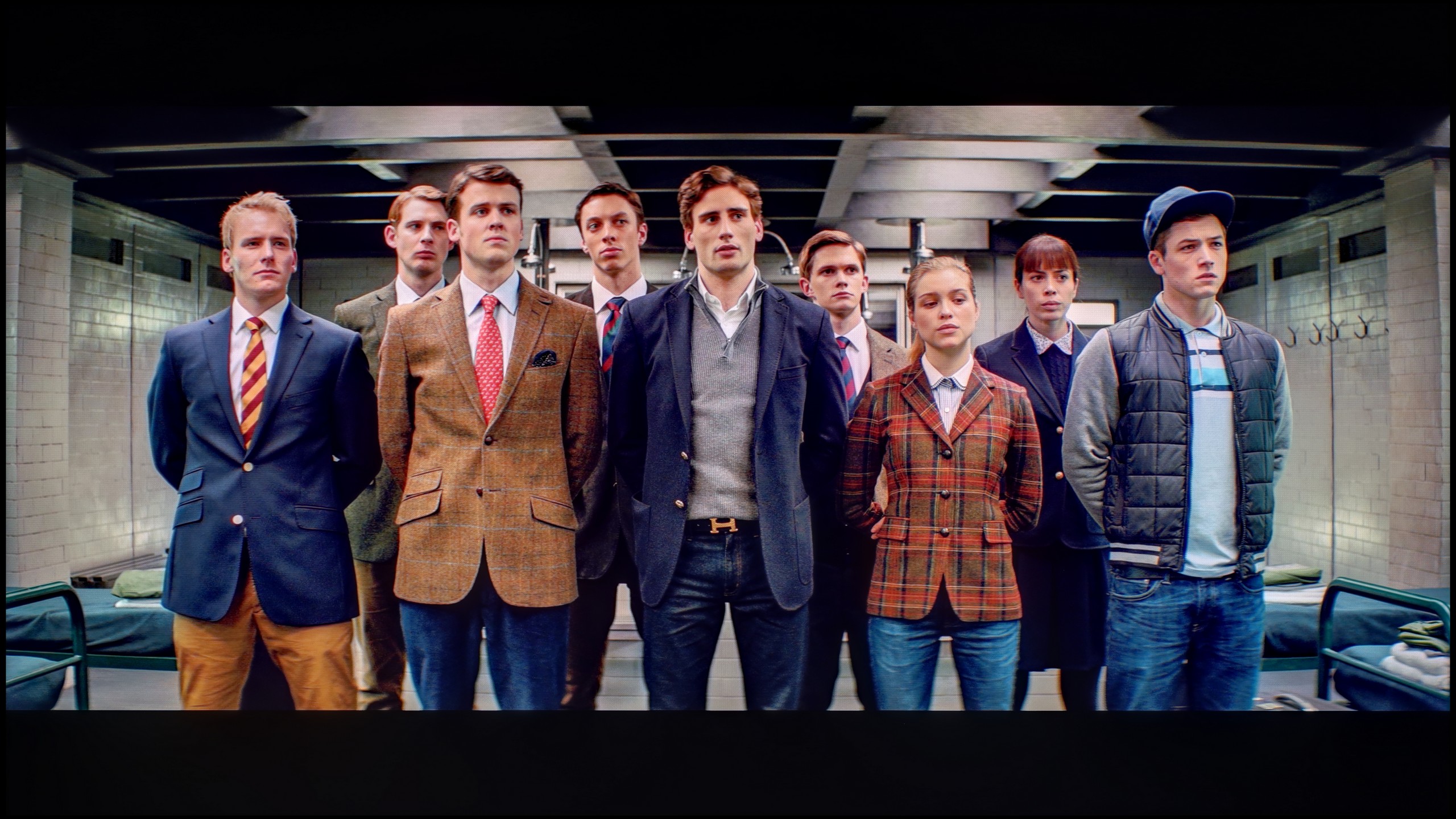

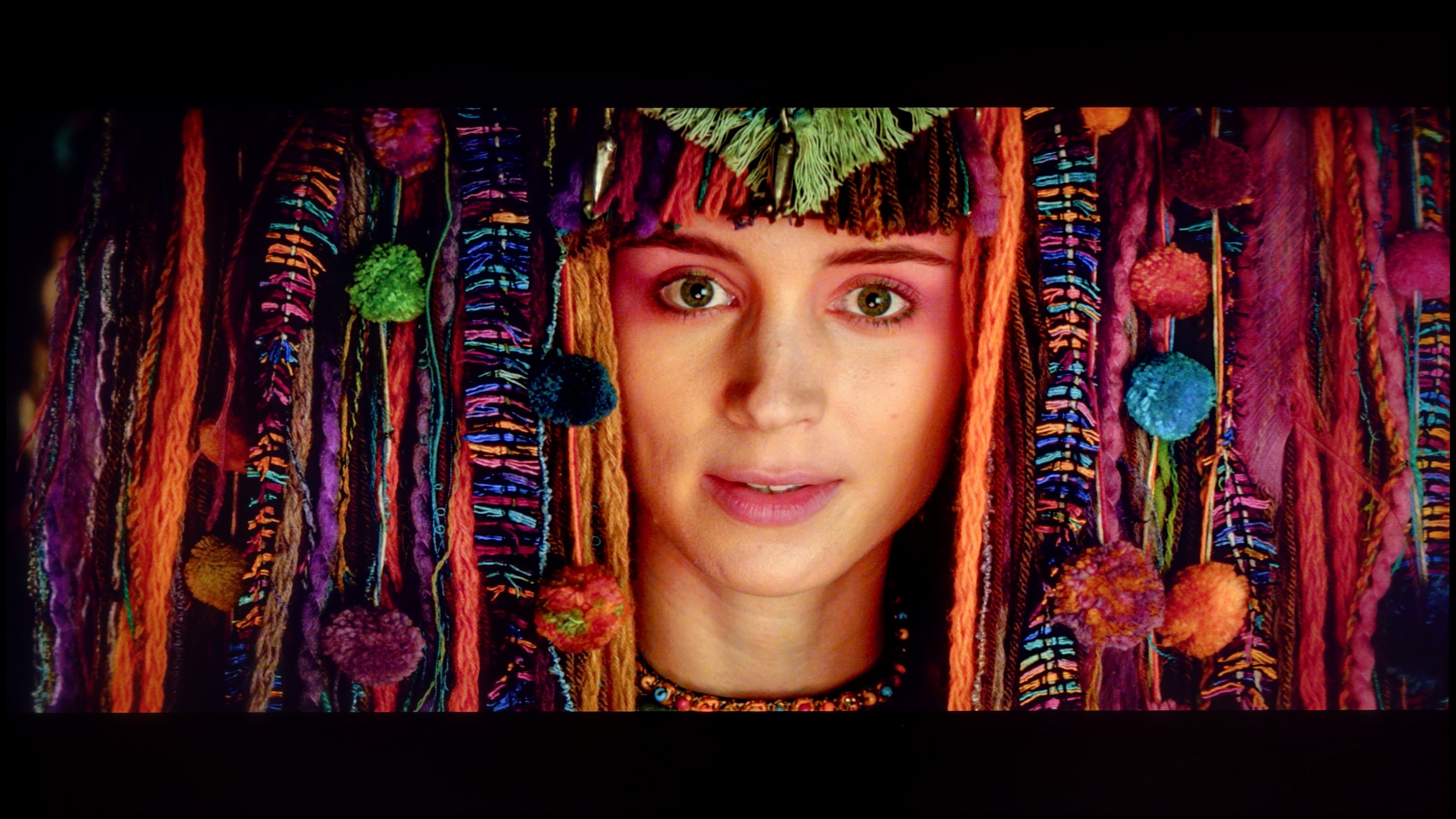
The calibration process of the Sony Bravia 8 television has brought significant improvements in image quality. The white balance has been distinctly enhanced, both for SDR content and 4K HDR, with minimal errors in the middle section of the graph. Gamma proved to be one of the biggest beneficiaries of the calibration – it has been completely stripped of previous drops, which significantly affected brightness stability and better detail reproduction in dark parts of the image. The EOTF curve has also been levelled out, making bright elements of the image appear more natural, and the overall tonal dynamics are now more balanced.
However, the most attention should be paid to colour reproduction, where despite the calibration, there are still some issues. Sony has omitted the use of a CMS system in this model, which allows for very precise control over colours. Consequently, the Colour Checker test for 4K materials still shows significant errors in colour samples. Despite these difficulties, we recommend carrying out the calibration, as the effects are noticeable and significantly enhance image quality, especially in terms of brightness and contrast.
After calibrating the movie mode, we managed to tame the colours in both modes almost to perfection – most of them did not exceed an error value of 3, which is the threshold of perceivability by the human eye. The image became more natural, fuller, and at the same time free of the overexposure that was noticeable right after taking the television out of the box. This demonstrates the significant potential that lies within the QN85F and how well it responds to precise settings. However, this does not change the fact that certain technological barriers cannot be overcome. Despite the enormous benefits of calibration, there are still limitations to the panel itself. Although the number of dimming zones has doubled compared to its predecessor, the algorithms controlling the backlighting can manipulate brightness in their own way. Sometimes this leads to slight colour inaccuracies or subtly visible halo effects around bright objects. Nonetheless, the viewing experience after calibration is really enjoyable and shows how good a screen the QN85F can be if we just take a moment for the right settings.
Smoothness of tonal transitions
5/10
9/10

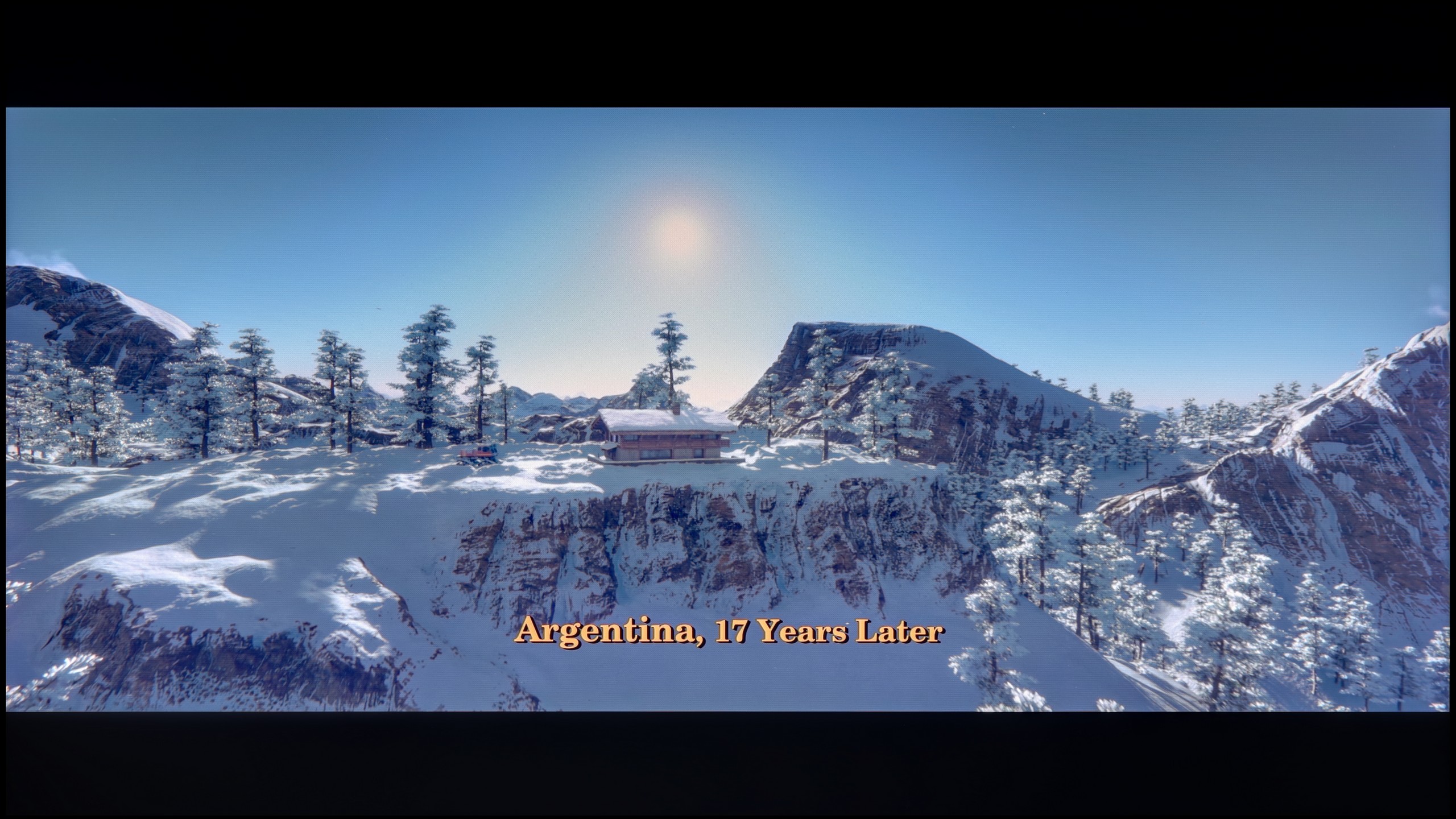



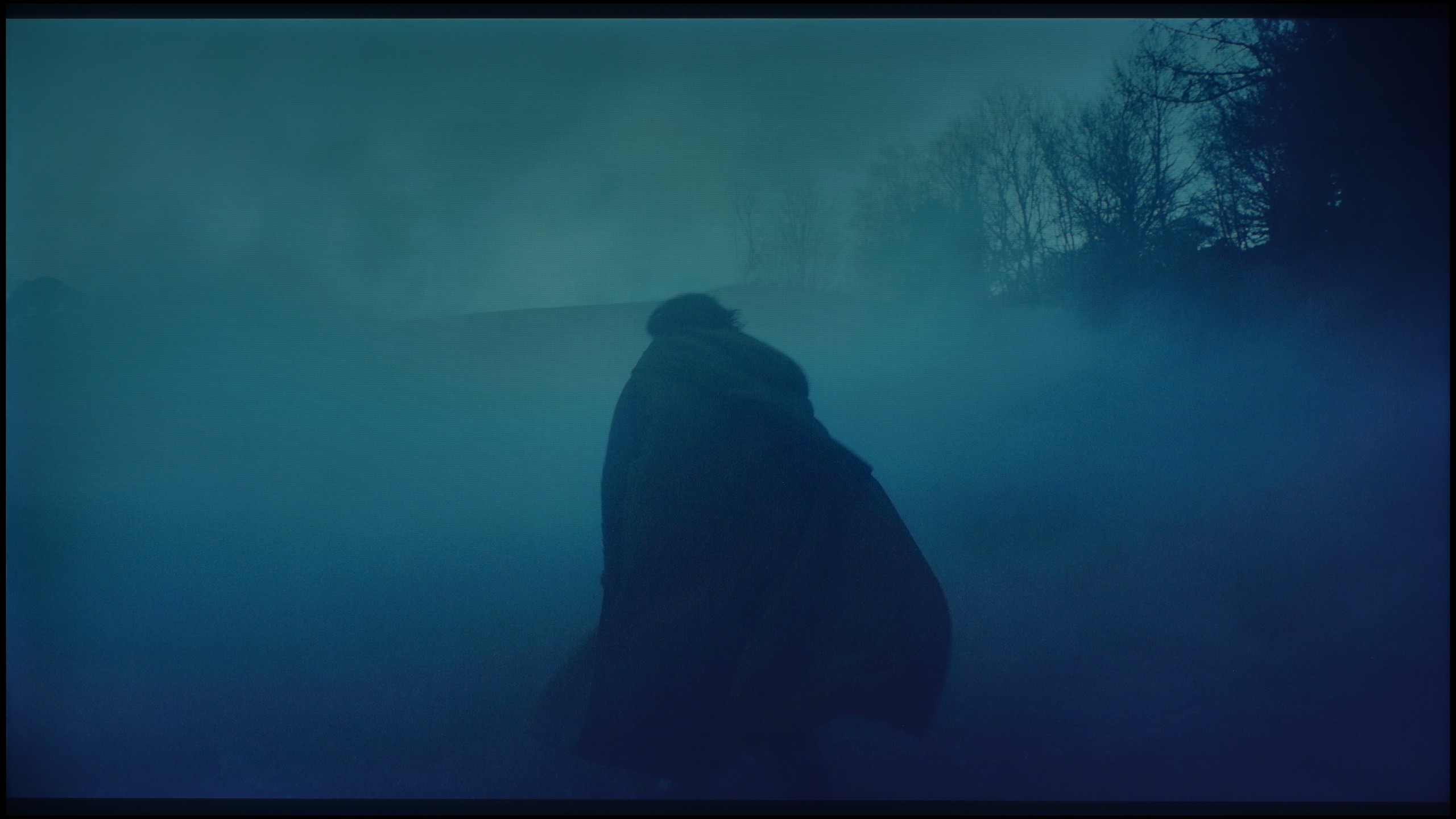

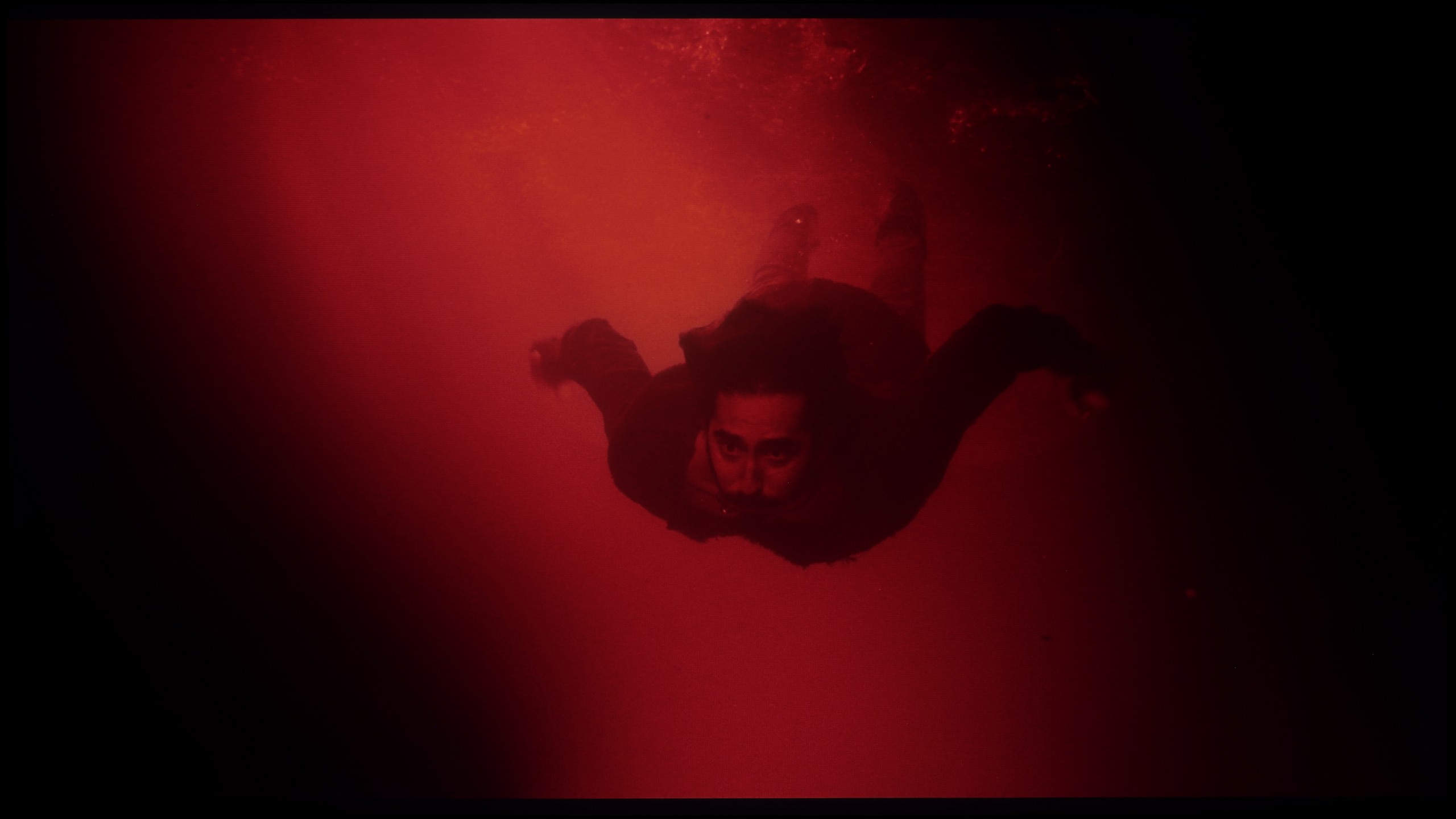




The gradation in 4K materials is simply poor and clearly disappointing. There are noticeable seams in both dark and light colours, which affects the image quality and reduces overall satisfaction when watching high-definition content. Something that has always been a strong point of Sony processors is clearly failing this time.
Minor colour errors are often practically unnoticeable; it is the fluidity of tonal transitions that is a category that even a less experienced viewer will pay attention to. Unfortunate stripes and artificial lines can completely ruin the perception of the image. Fortunately, the QN85F handles this aspect almost perfectly. Gradients are smooth, transitions between colours are seamless, and no artificial lines or distinct boundaries separating hues appear on the screen. The image remains consistent, and nothing distracts our attention from the content. Only in very extreme conditions did we notice slight issues in the grey palette, but this is a flaw typical of most televisions and it's hard to consider it a serious drawback. In practice, while watching films, we encountered no problems.
Image scaling and smoothness of tonal transitions
6.1/10
7.5/10
Smooth transition function

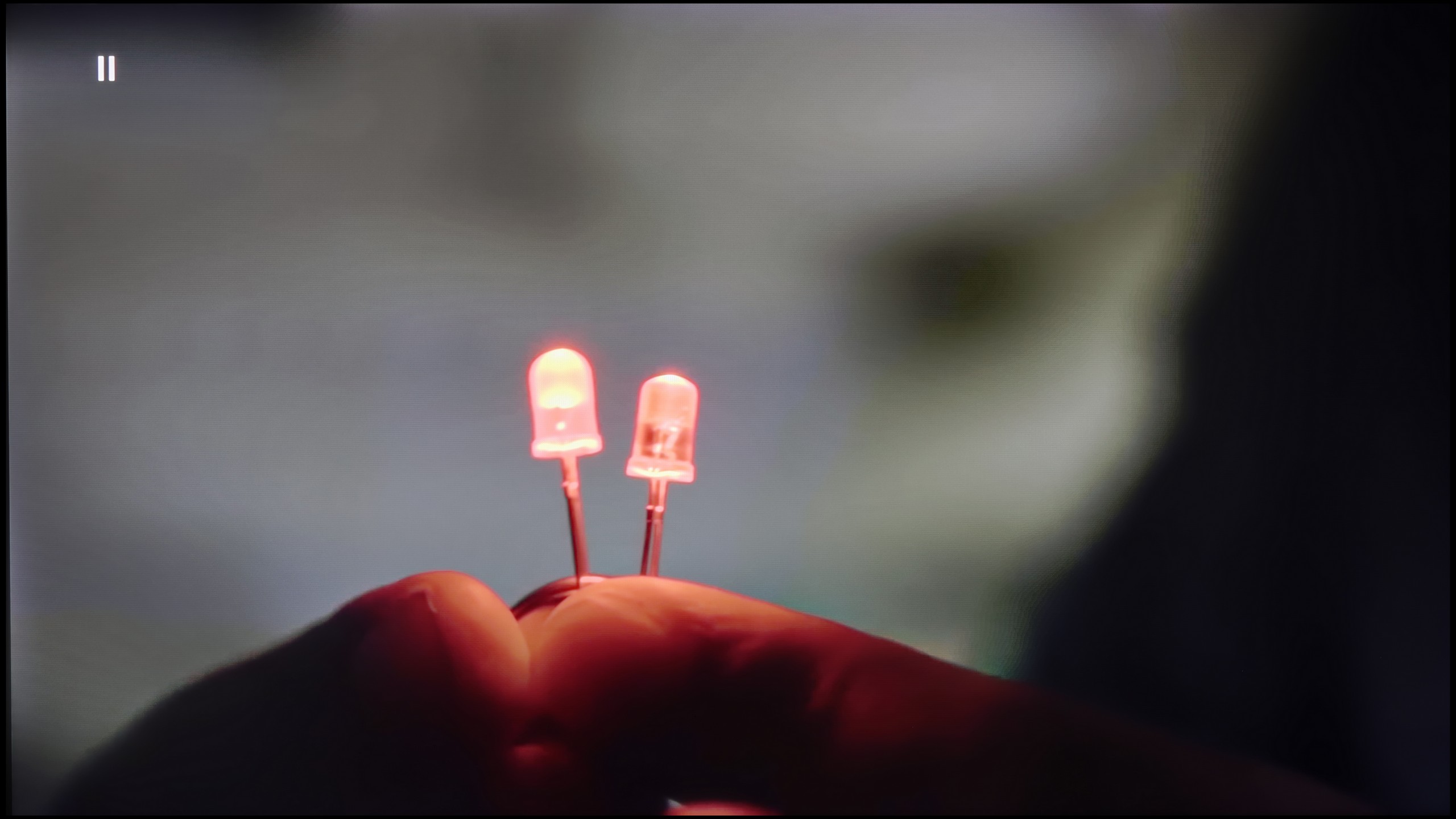
Image without overscan on the SD signal

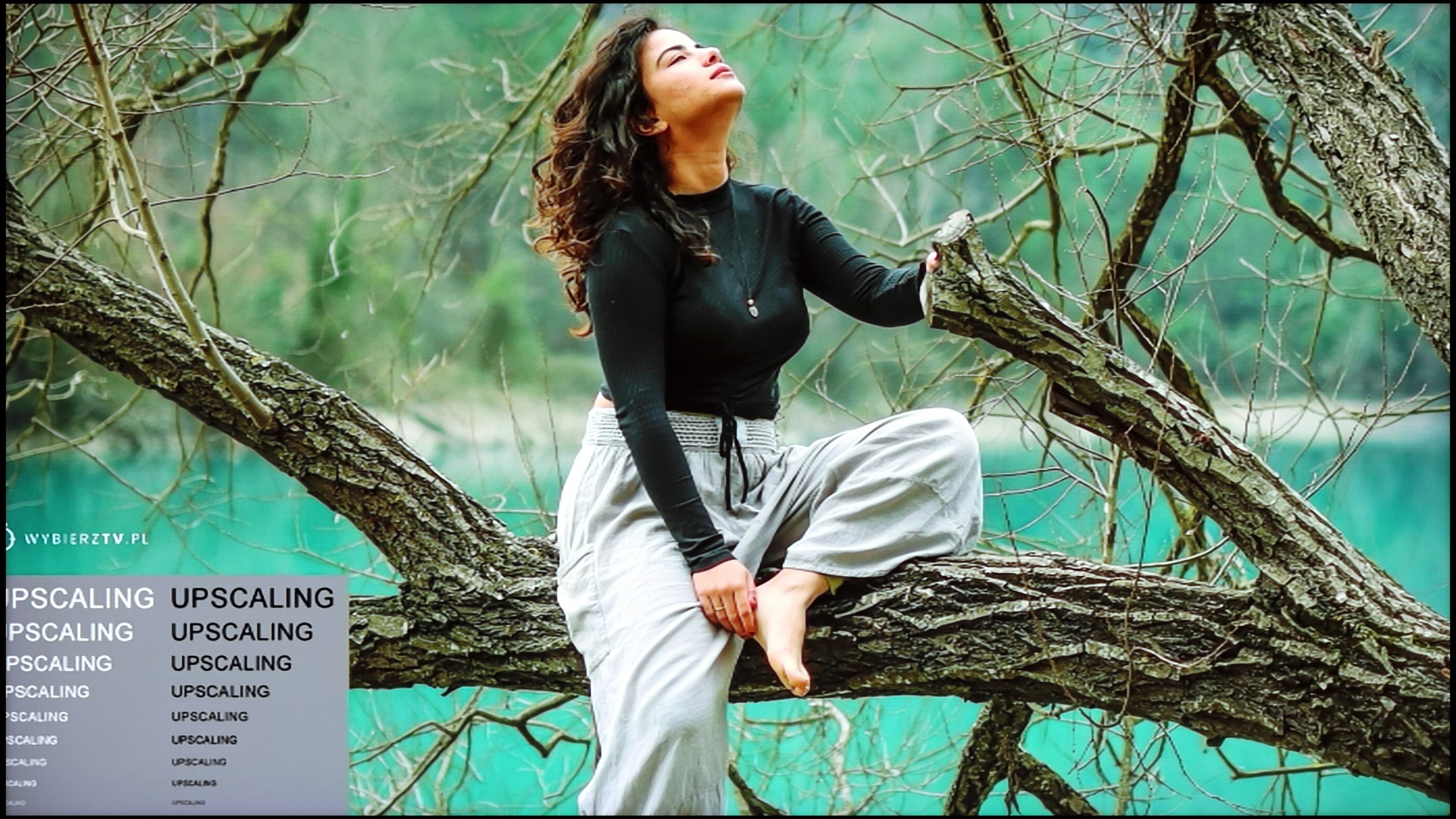
The fluidity of tonal transitions in low-quality materials on the ChooseTV 8 is lacking. Unfortunately, the gentle gradation feature (which was available in previous models) is missing, which is a significant downside. The digital noise reduction function can improve tonal transitions quite well, but it also tends to remove some details, such as clouds in scenes from the film The Martian, which may not appeal to everyone. When it comes to digital processing, the Sony XR80 TV performs quite well. The model in the test scenes is displayed without noticeable errors, and the branches in the background are not overly jagged. This shows that ChooseTV 8 is capable of processing complex image details at low resolution well.
Although the native tonal transitions on the QN85F perform excellently with 4K content, we don't always have to deal with the highest resolution material. This is where how the TV handles upscaling and digital image processing becomes crucial. This process is managed by Samsung's proprietary processor – AI NQ4 Gen2. In practice, it works very effectively. If visible colour banding or other undesirable phenomena appear on the screen, for instance with content from YouTube, they can easily be smoothed out using the "noise reduction" feature. Set to medium, it improves tonal transitions while not overly blurring desired details. However, it should be noted that – like in most Samsung TVs – this feature heavily interferes with film grain. Therefore, during movie screenings, it’s wise to use it cautiously to avoid losing the natural character of the image.
The upscaling itself looks very good. Test materials in lower resolutions were displayed sharply and clearly, with a lot of details. The only drawback remains the issue with overscan, which cuts off the edges of the screen. In most situations, this isn't noticeable, but with very old materials below HD quality, there may be instances where a fragment of the image from the left side gets slightly cut off.
Blur and motion smoothness
8.5/10
7.7/10

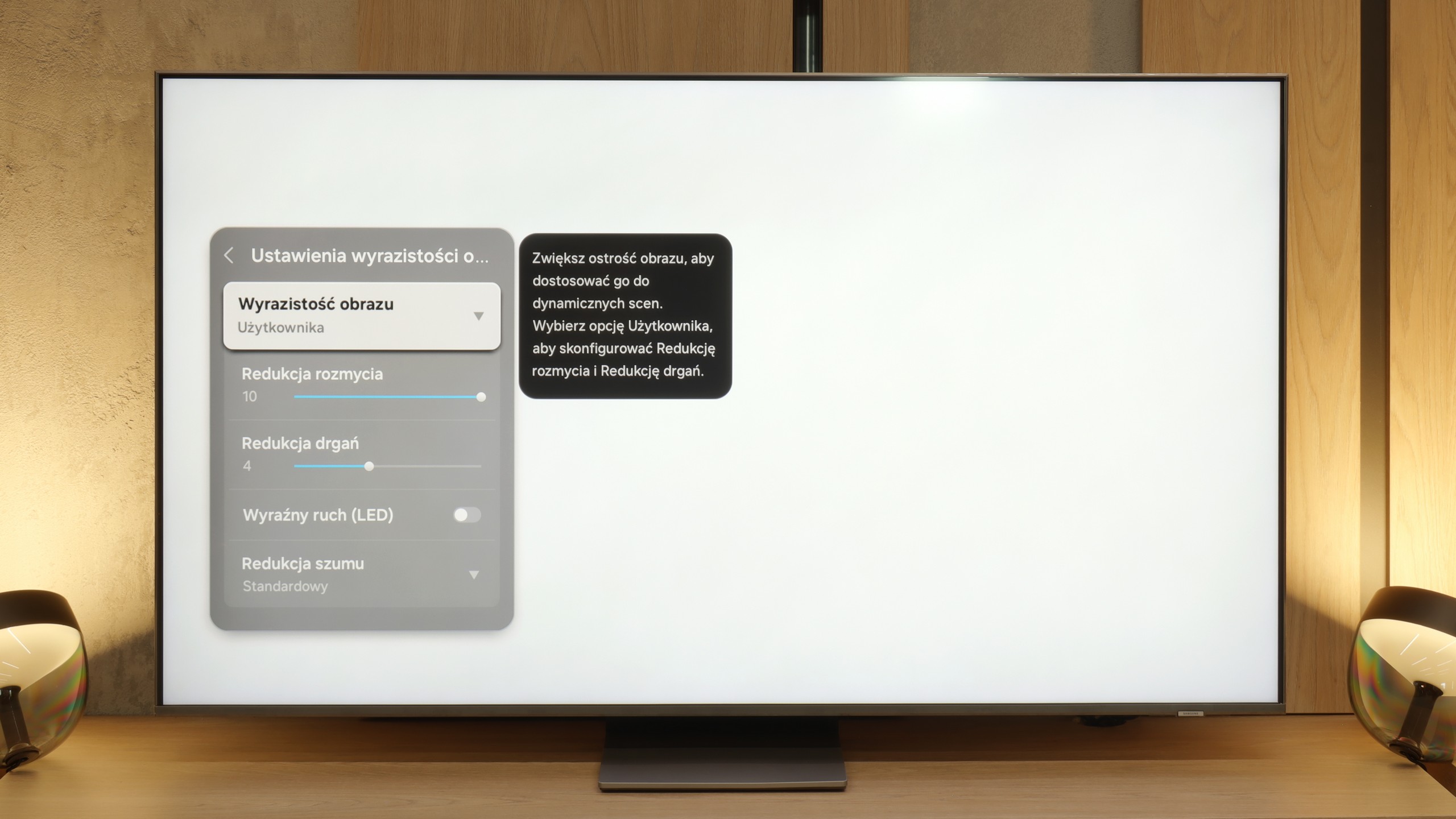
Blur (native resolution, maximum refresh rate):



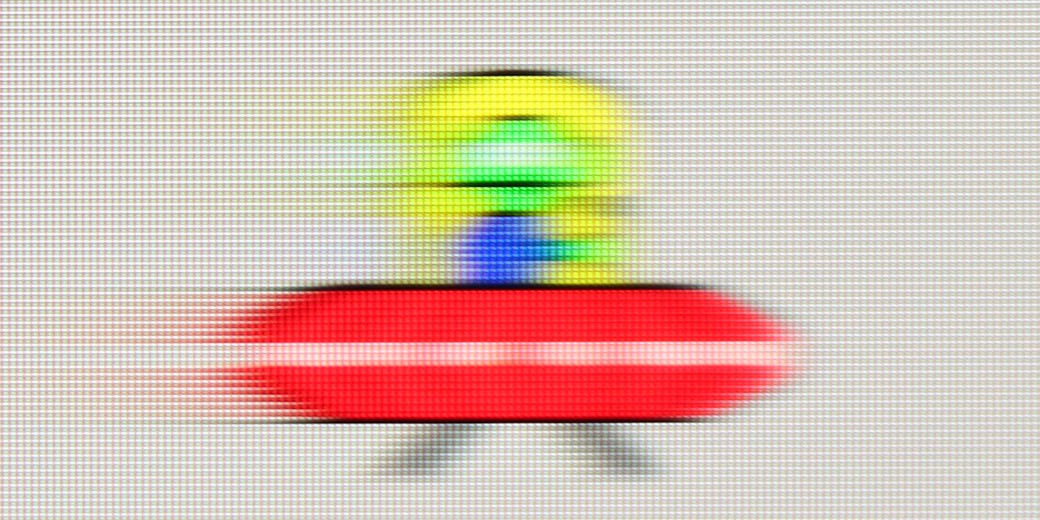
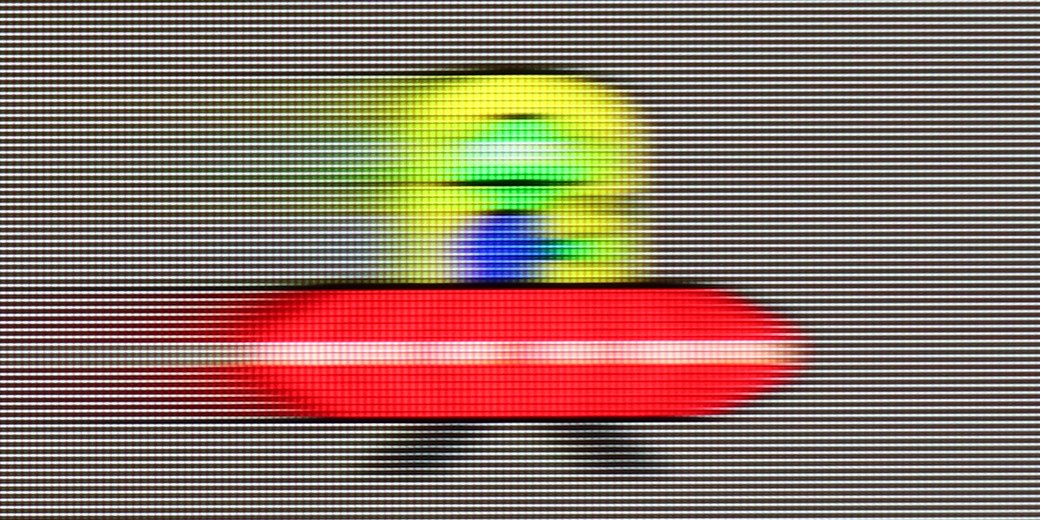
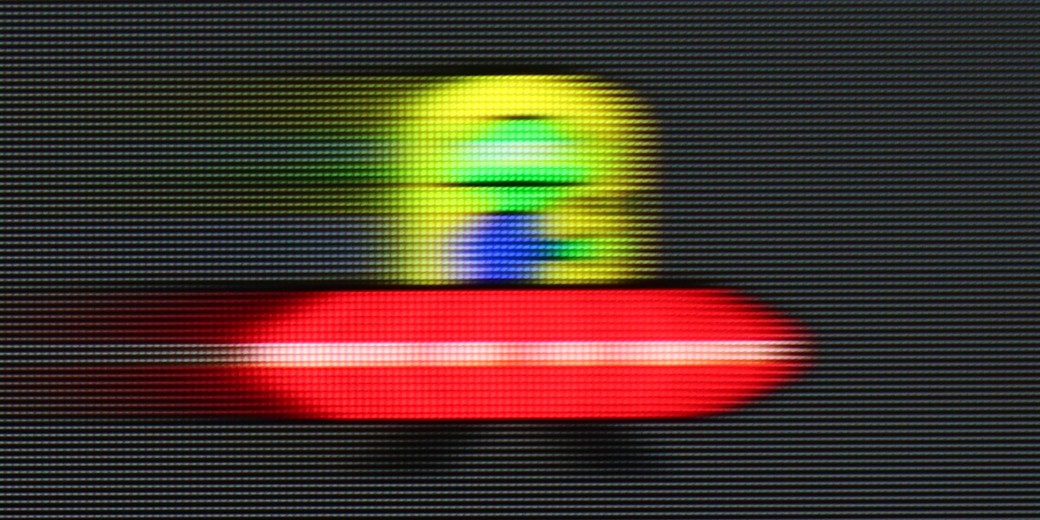
Blur (BFI function enabled):
Image flickers in this mode



Image flickers in this mode



Smużenie ():
Smużenie (4K@144Hz):
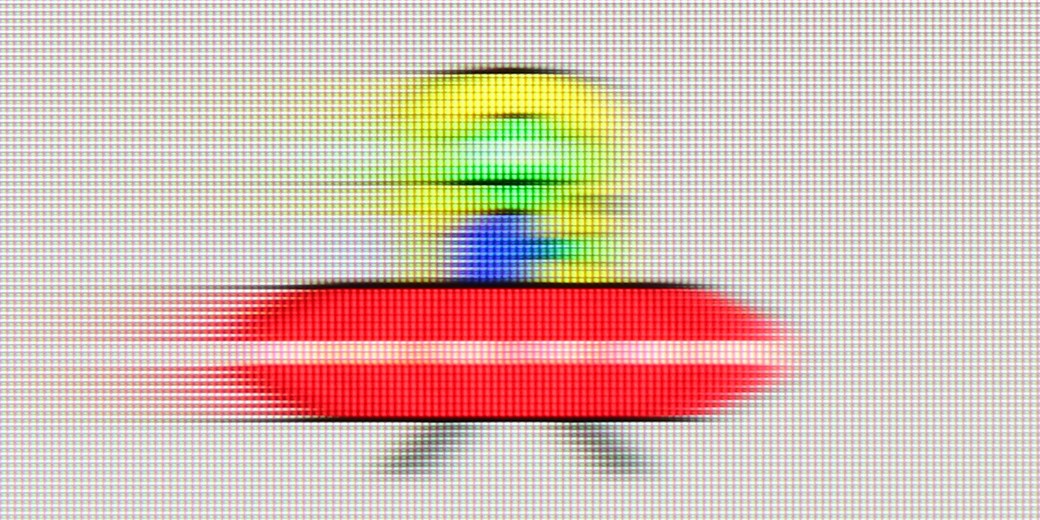
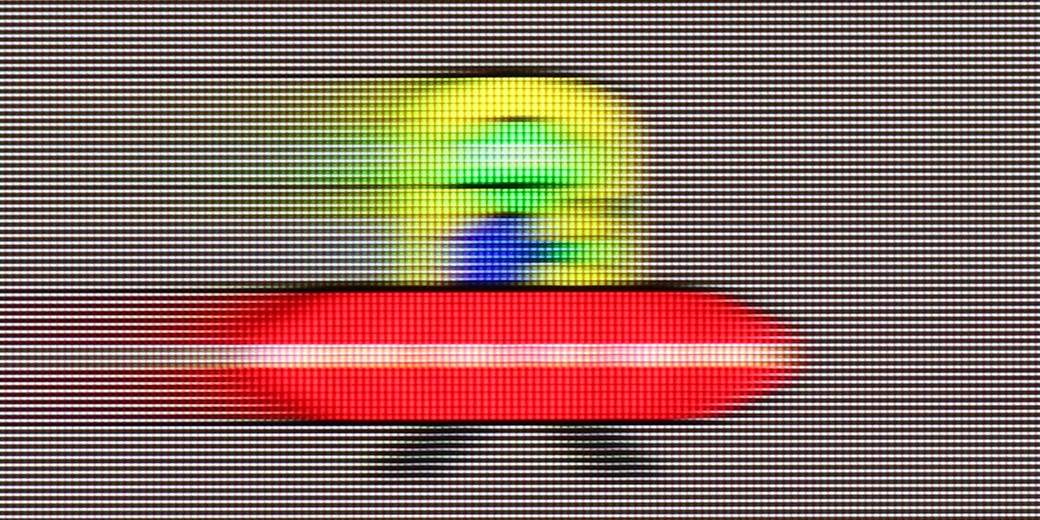
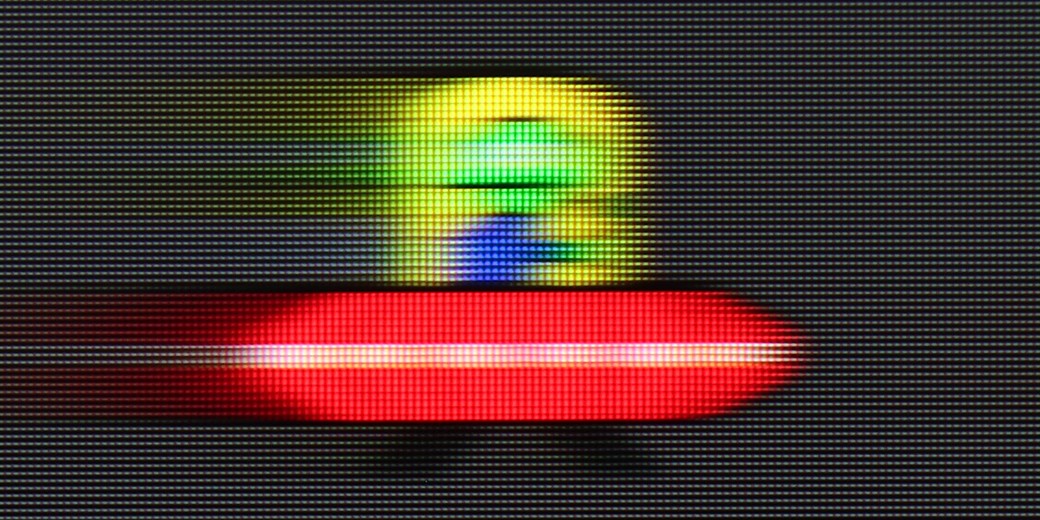
Sony Bravia 8 offers a maximum refresh rate of 120 Hz, which lays the groundwork for smooth viewing of dynamic content such as sports and games. As a result, movements are sharp and fluid. For more demanding users, the Sony XR80 television is equipped with an advanced motion smoothing system, which is divided into three segments: Smoothness (Film), Smoothness (Camera), and Clarity. The first two are responsible for adjusting the level of blur and smoothing of the image. The third option, concerning clarity, will be described in more detail below. Each of the parameters can be tailored to personal preferences, allowing users to find the optimal setting suited to their individual needs.
Motion blur and fluidity of movement in the QN85F is a topic worth discussing further because the TV is equipped not with a standard 120 Hz panel but with a 144 Hz one. The extra hertz will mainly be appreciated by PC gamers, but the very fact of having such an option can be seen as a nice addition and a sign of the times – it's hard to complain about the trend of faster panels since in practice, each of us would like the picture to be as smooth as possible. However, the most important thing is how the TV performs with typical 120 Hz refresh rates – in the case of consoles, sports, or films recorded at 24 or 30 frames per second. And here, the QN85F performs really well. In films, you can easily adjust the character of the picture thanks to the "image clarity" feature, where you'll find two control sliders. Key in the case of screenings is the one responsible for reducing motion judder. Lower values give the image a more cinematic character with preserved "frame-ness," while higher values lead to strong smoothing, reminiscent of television theatre.
Console compatibility and gaming features
8.1/10
8.2/10
- ALLM
- VRR
- VRR range48 - 120Hz48 - 144Hz
- Dolby Vision Game Mode
- Correct implementation of HGIG
- 1080p@120Hz
- 1440p@120Hz
- 4K@120Hz
- Game bar

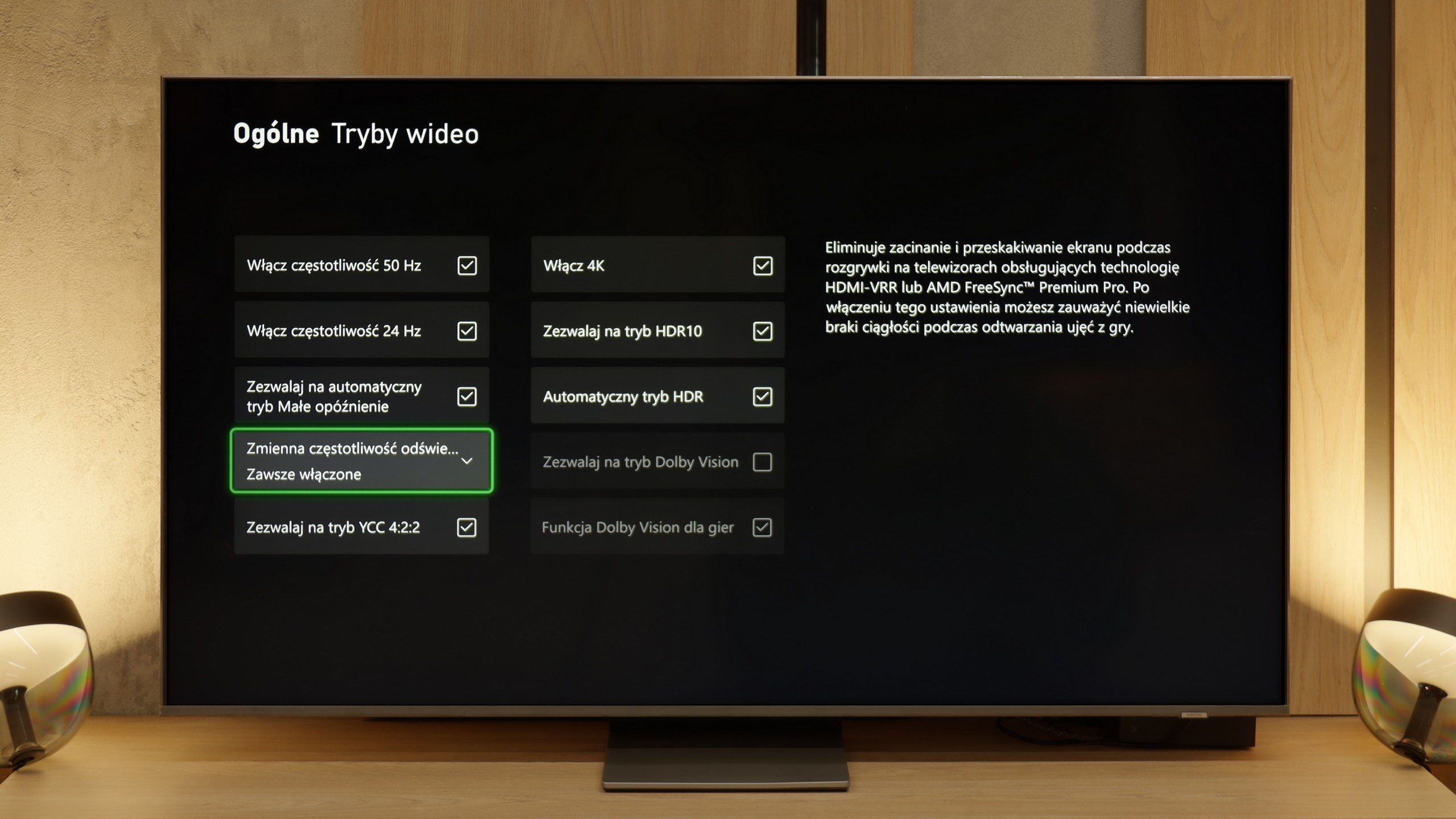

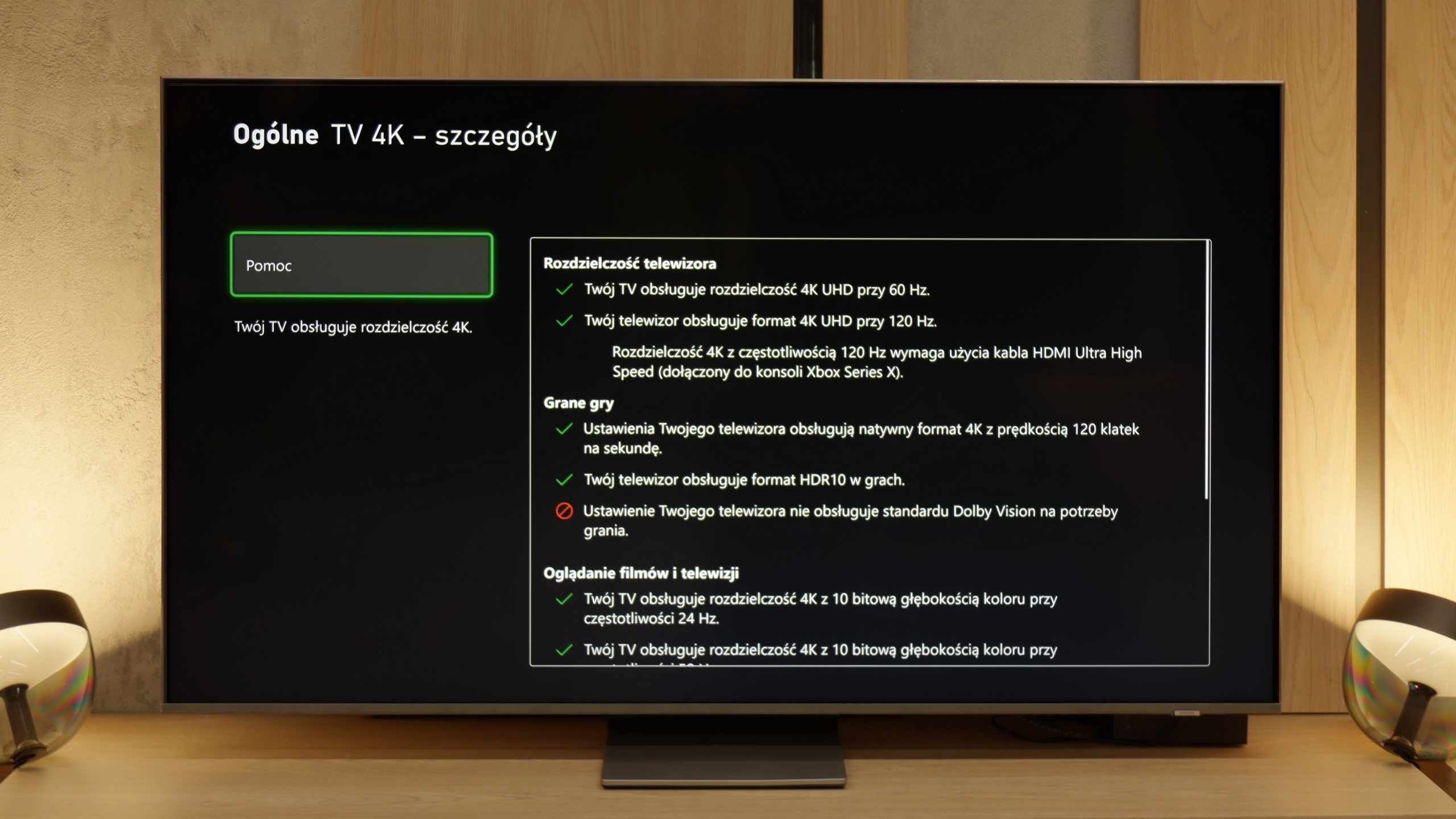

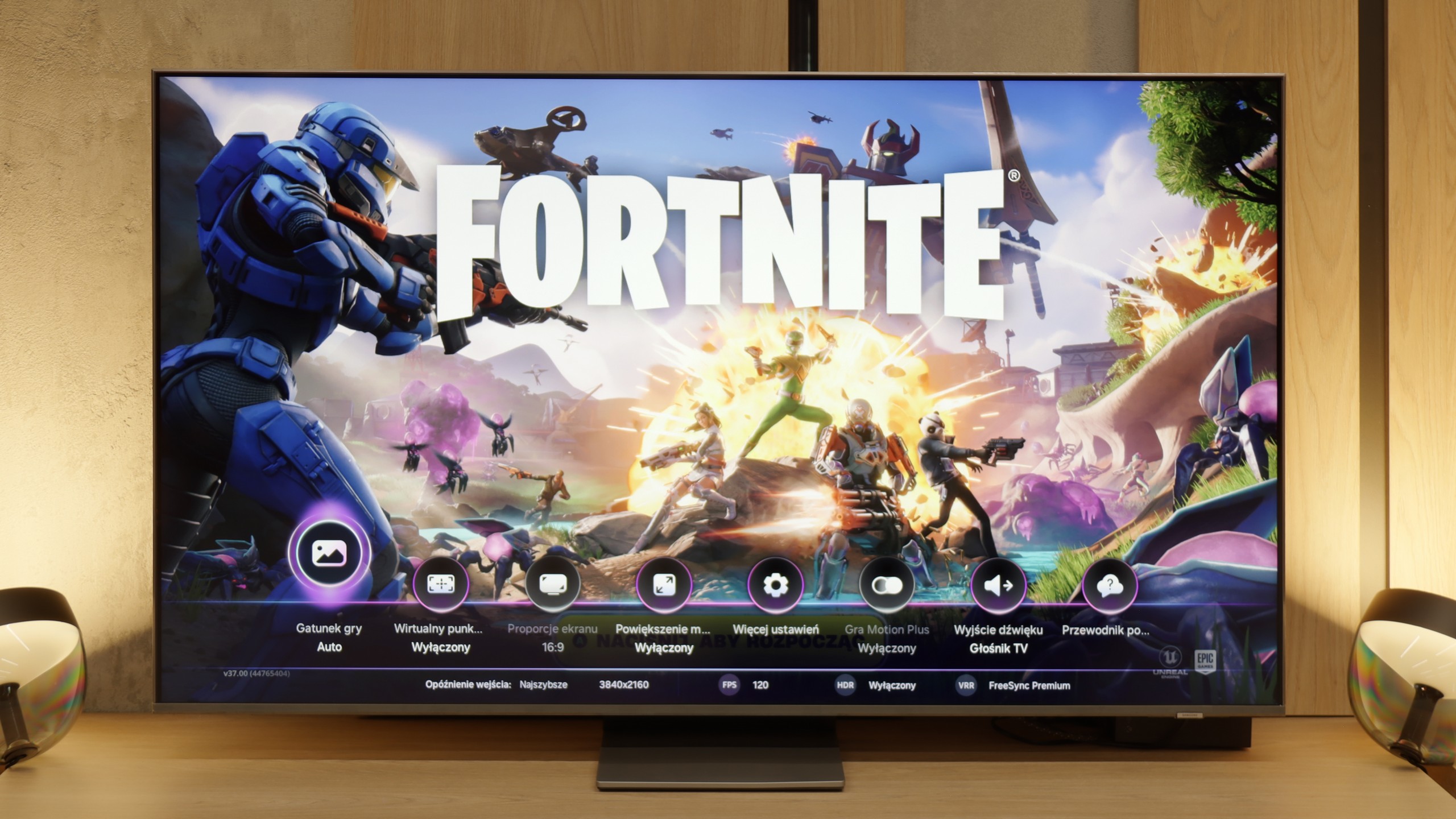

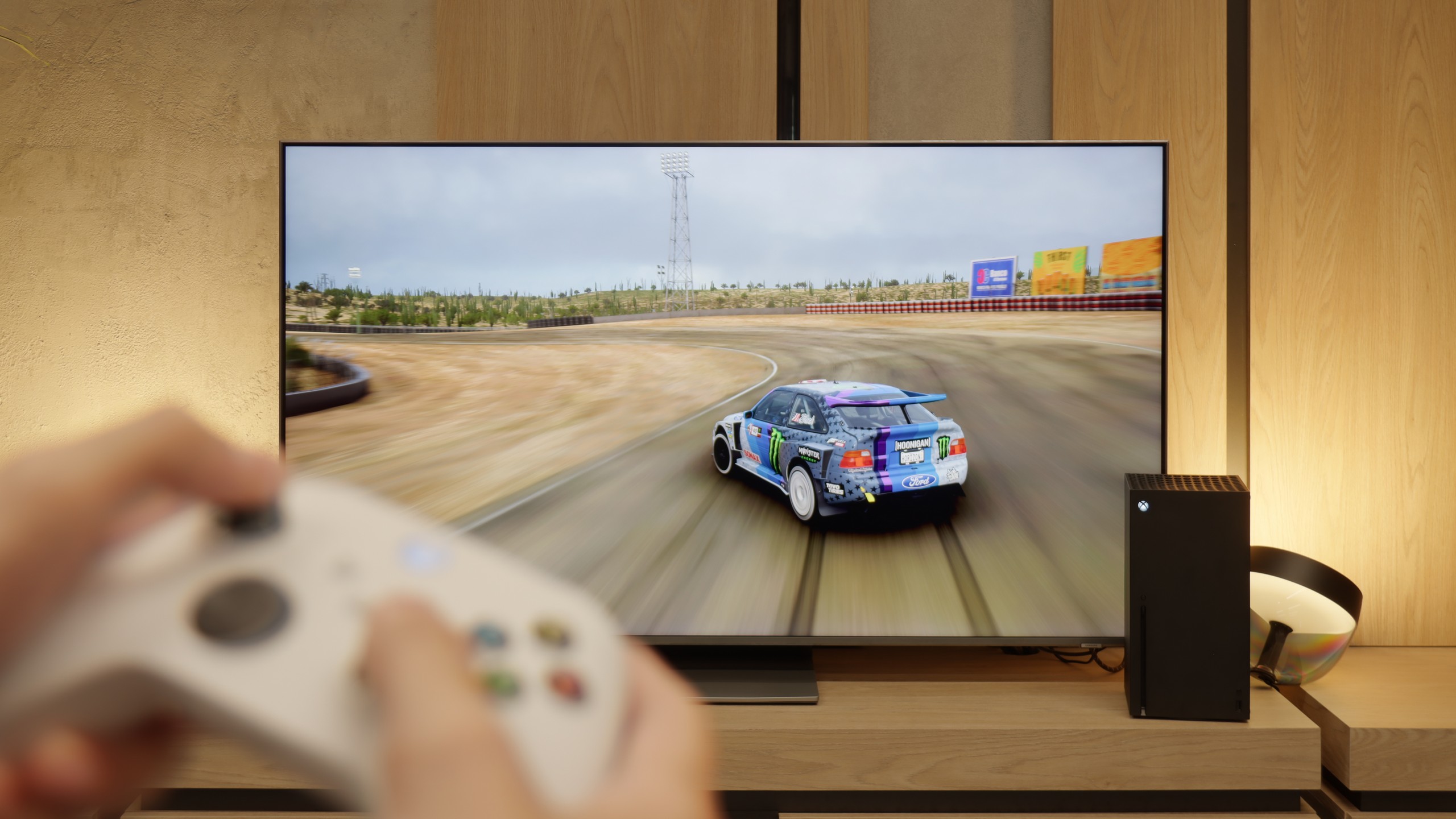
Sony Bravia 8 has significantly improved its compatibility with consoles compared to earlier models. The TV supports variable refresh rate (VRR), which eliminates screen tearing, and is compatible with graphics cards, ensuring smooth visuals. The auto low latency mode (ALLM) reduces input lag, which is crucial in fast-paced games. Dolby Vision with low latency additionally provides impressive HDR effects that look fantastic during gameplay.
The Sony XR80 TV also features a Game Bar, which allows quick access to settings and monitoring parameters while gaming. An interesting option is the ability to enable a virtual crosshair on the screen, which can provide a slight advantage in shooter games.
A downside is the lack of support for 1440p@120hz resolution, which could make gaming easier for users with less powerful graphics cards. Additionally, the Sony XR80 only has two HDMI 2.1 ports, one of which is typically used to connect an audio system via eARC, limiting the number of available ports for connecting next-gen consoles.
The Samsung QN85F makes a fantastic impression from a gamer’s perspective. It features four HDMI 2.1 ports, so we can easily connect multiple devices at the same time. There’s also Variable Refresh Rate (VRR) to prevent screen tearing, as well as Auto Low Latency Mode (ALLM), which allows the TV to automatically switch to the appropriate settings when we start the console. Additionally, it supports refresh rates of up to 144 Hz – something that PC gamers will particularly appreciate, but the mere fact that this option is available shows that Samsung is committed to full support for gamers. The Game Bar panel also deserves praise. It provides a quick overview of key parameters – from frame rates to refresh mode, and even shortcuts to picture settings. Instead of sifting through the entire menu, everything is at our fingertips, which proves to be really convenient in practice. However, the most interesting addition is the Game Motion Plus feature. It’s essentially a motion smoothing function, brought into the gaming world. When activated, the picture becomes smoother, sometimes it even looks like we’ve gotten a few extra frames, and importantly – the response delay doesn’t increase enough to hinder gameplay. This solution truly sets Samsung’s 120Hz TVs apart from the competition.
The only serious downside remains the lack of proper HGiG support. This standard is responsible for accurate tone mapping in HDR games, which ensures that brightness and contrast are displayed according to how creators intended. Without HGiG, we have to manually adjust brightness, which doesn’t always yield perfect results. The feature was available in previous models, but it disappeared from the QN85F after one of the updates. We hope that Samsung will quickly rectify this issue, and we will be keeping an eye on whether they succeed.
Input lag
10/10
9.8/10
SDR
HDR
Dolby Vision
Low input lag in Sony Bravia 8 is definitely an advantage – results at 13 ms are outstanding and provide excellent responsiveness. The Dolby Vision mode is also noteworthy, as it performs brilliantly in this model. In many cases with other manufacturers, this mode looks much worse, but here you can enjoy its full potential, especially in games.
The input lag in the QN85F is exceptionally high. With content at 120 or 144 Hz, the values often hovered below 10 ms, which is an outstanding result. Naturally, when playing at 60 Hz, the lag doubles, but it still remains low enough to be practically unnoticeable. This makes the QN85F suitable for both dynamic e-sports games and more relaxed console titles.
Compatibility with PC
7.6/10
8.4/10

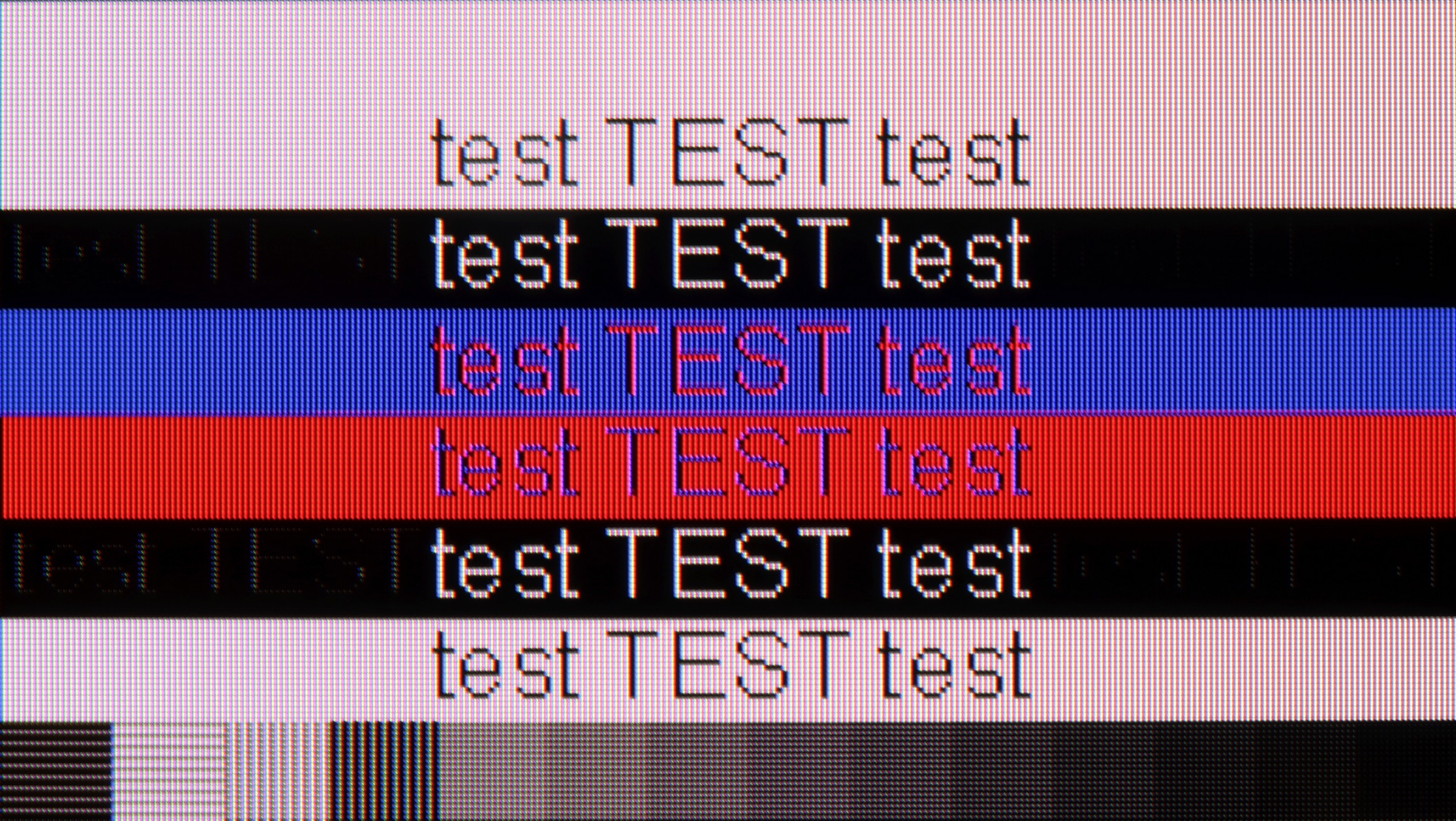
The cooperation of Sony Bravia 8 with computers is very good, just like with most TVs featuring a WOLED panel. The readability of fonts is at a high level, making work with documents or browsing websites comfortable. The low input lag of 5 ms is impressive and provides excellent responsiveness during gameplay. The only downside is that fonts displayed on a dark background are slightly muted.
The QN85F performs really well in terms of collaboration with computers. Thanks to the PC mode with a refresh rate of up to 144 Hz, support for G-Sync, and low input lag, gaming on a personal computer is very enjoyable and should not cause frustration even for more demanding gamers. The readability of the fonts is also good – the TV supports 4:4:4 chroma, so standard texts look sharp and clear. The problem only arises with very thin letters. Regardless of the refresh rate setting – whether it’s 144, 120, or 60 Hz – horizontal, thin lines were poorly visible. Reducing the refresh rate slightly improved the situation, but never to the point where one could say they were displayed perfectly.
Viewing angles
7.3/10
3.2/10
The viewing angles on the Sony Bravia 8 are very good, as one would expect from a TV with an OLED panel. This means that the image retains its colours and contrast even when viewed from a large angle. The only televisions that will be better in this category are models equipped with MLA (Meta-Lens Array) technology and QD-OLED, offering even wider viewing angles and better image quality at extreme angles.
The viewing angles on the QN85F are the classic Achilles' heel of most LCD TVs with VA panels. When looking at the screen from an angle, the drop in brightness becomes apparent quite quickly, with whites starting to grey and colours losing their intensity. This is the price to pay for the high contrast that this technology offers. Samsung could have opted for a better coating to enhance viewing angles in this model, but it is not present here. In practice, this means that the best viewing experience will be obtained when sitting directly in front of the television, and any significant deviation will result in a noticeable loss of picture quality.
TV efficiency during daytime
5.6/10
6.9/10

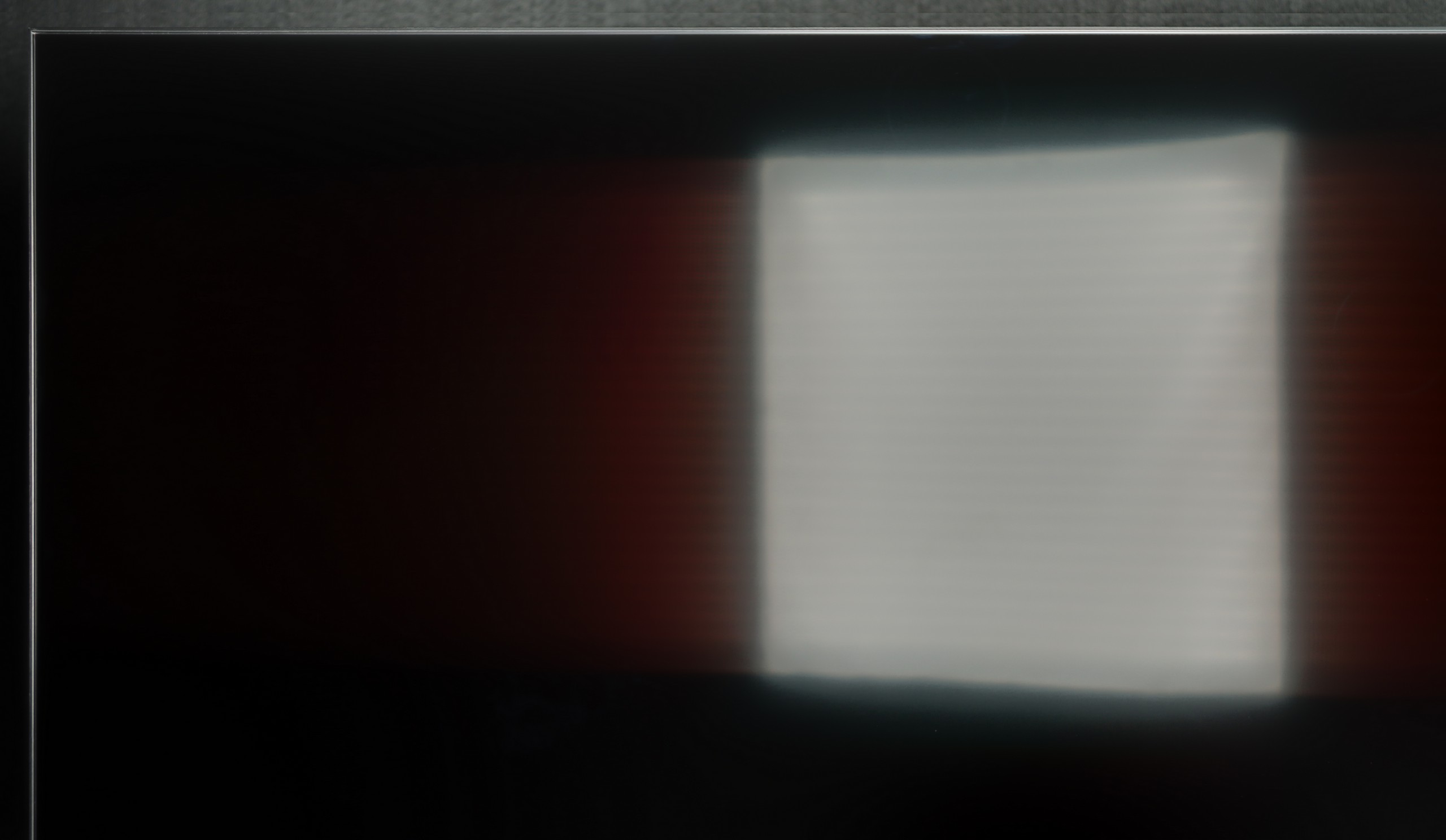

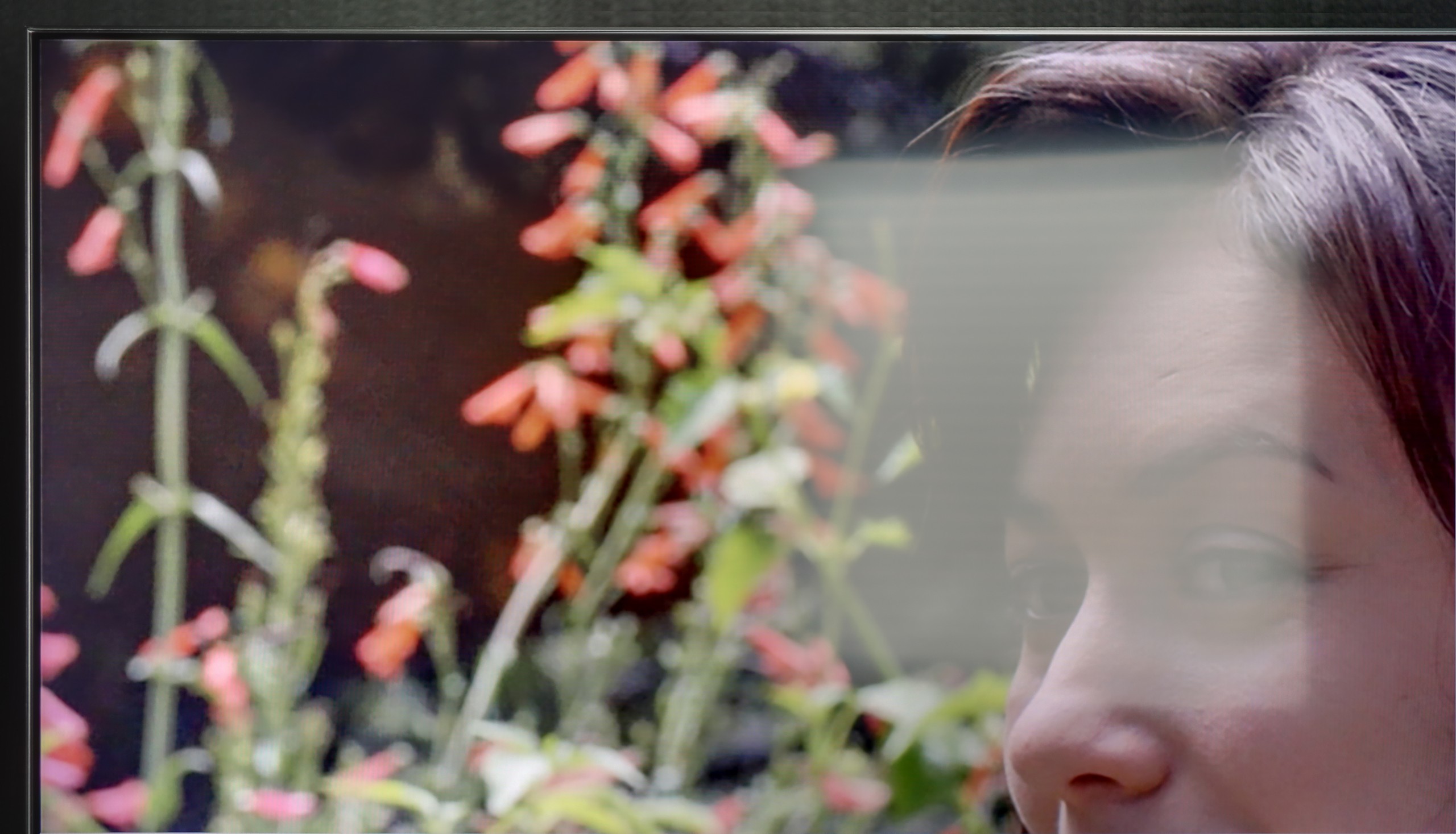
Matrix brightness
Average luminance SDR
Samsung QN85F : 690 cd/m2
Sony Bravia 8 (XR80): 335 cd/m2
The glossy screen on the Sony Bravia 8 does a great job of reducing reflections, which take on a slight navy hue. Unfortunately, the brightness level of 330 nits isn't particularly impressive, making this TV better suited for evening viewing. During the day, to ensure optimal picture quality, it's a good idea to help out by closing the curtains, which will limit the impact of external light.
QN85F performs exceptionally well during the day. The satin finish of the screen combined with high brightness makes it a television designed for bright rooms. Colours do not lose their intensity, and the image does not wash out even when a lot of light floods in. The television itself is bright enough to handle a lounge with large windows facing south. Therefore, the QN85F gives us an image that allows us to watch movies or matches during the day without annoying reflections and the feeling that the picture disappears in the sunlight.
Details about the matrix
Subpixel Structure:

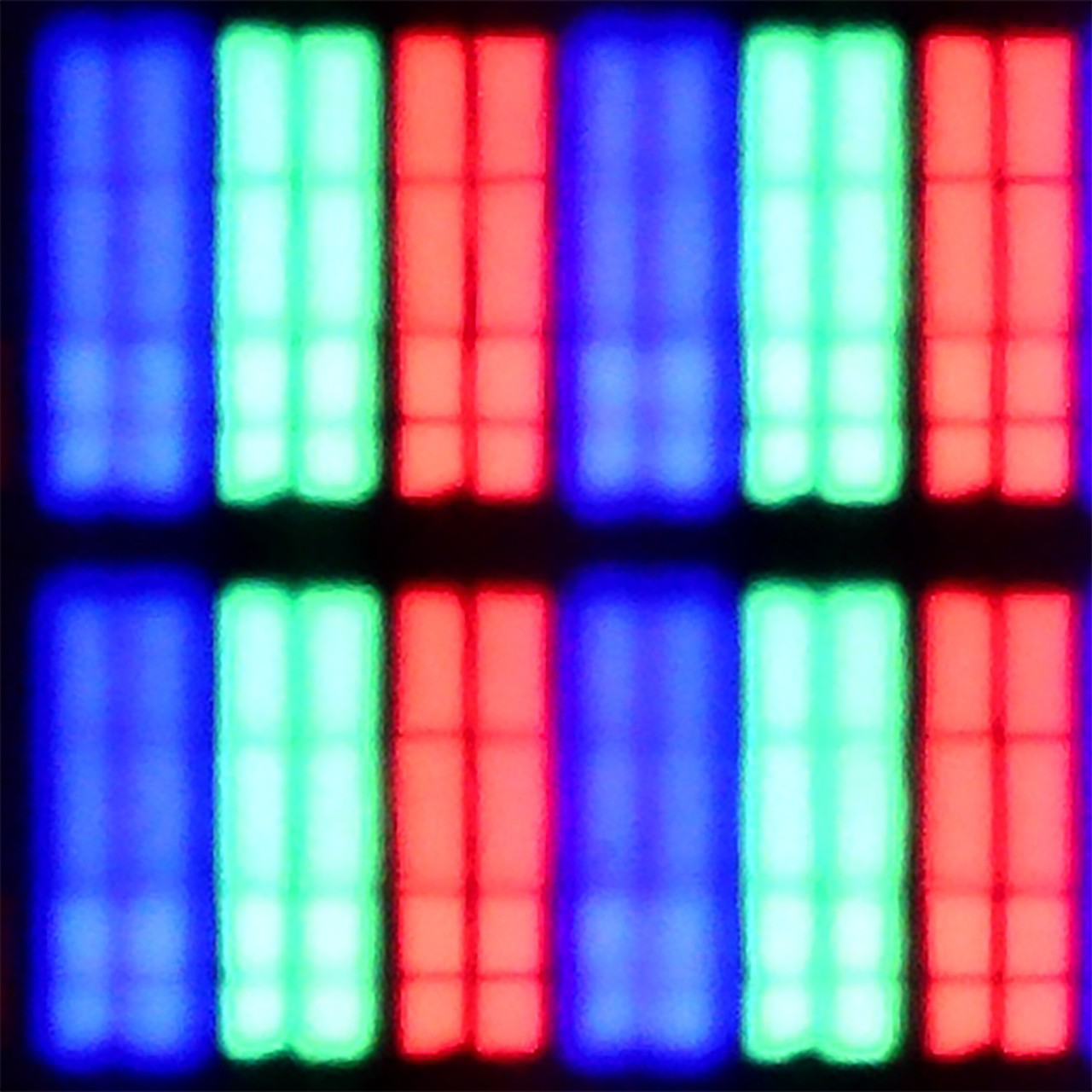
Panel uniformity and thermal imaging:

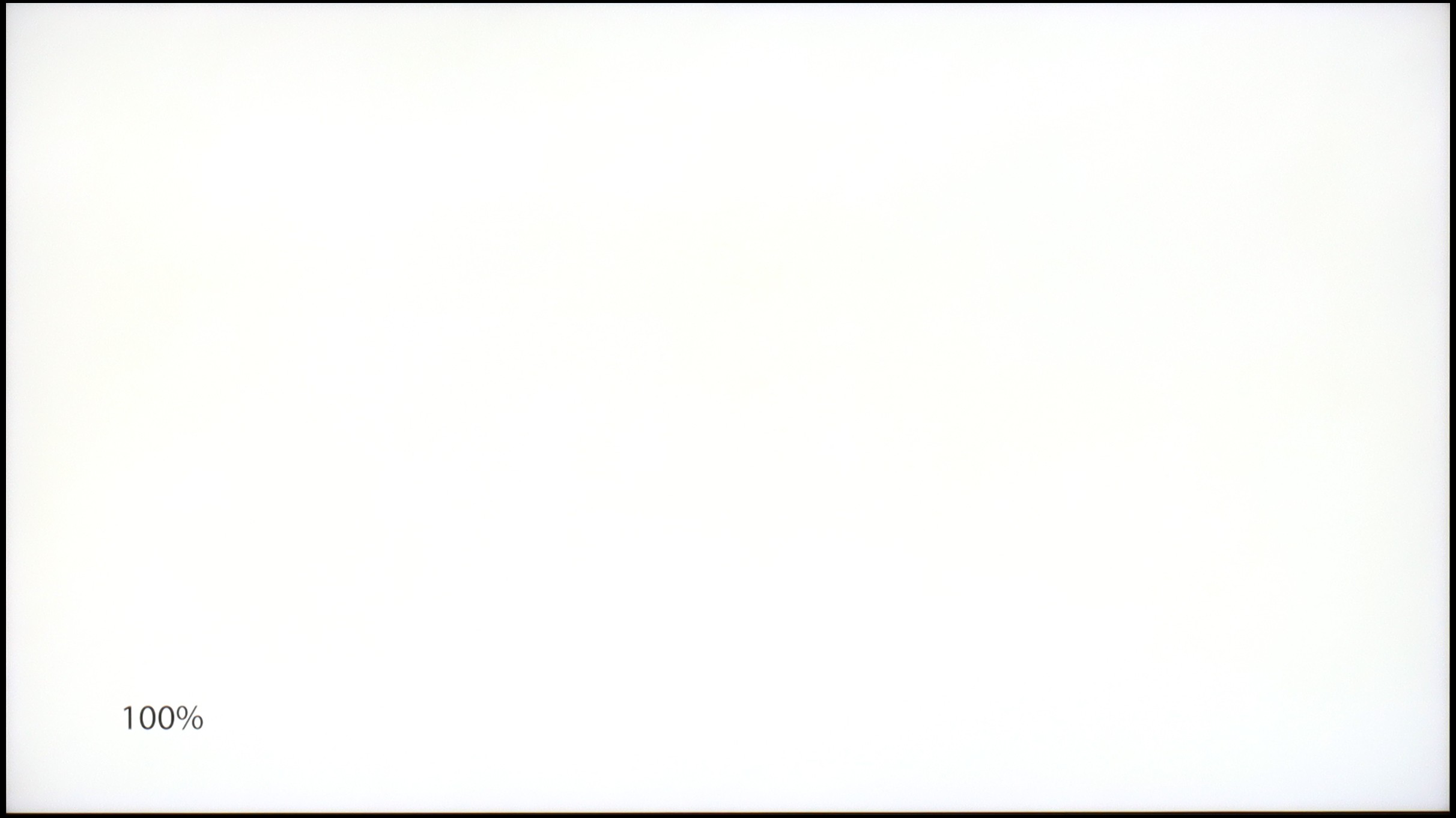
Sony Bravia 8 (XR80)
Samsung QN85F
TV features
9.4/10
7.3/10
- HDMI inputs2 x HDMI 2.0, 2 x HDMI 2.1 48Gbps0 x HDMI 2.0, 4 x HDMI 2.1 48Gbps
- OutputsToslink (Optical audio), eARC (HDMI), ARC (HDMI)Toslink (Optical audio), eARC (HDMI), ARC (HDMI)
- Network InterfacesWi-Fi 2.4GHz, Wi-Fi 5GHz, Ethernet (LAN) 100MbpsWi-Fi 2.4GHz, Wi-Fi 5GHz, Ethernet (LAN) 100Mbps
- TV receptionDVB-T, DVB-T2, DVB-S, DVB-S2, DVB-CDVB-T, DVB-T2, DVB-S, DVB-S2, DVB-C
Classic features:
- Recording to USB (terrestrial TV)
- Recording programming
- Picture in Picture (PiP)
- RF remote control (no need to aim at the screen)
- Backlit remote control
- Teletext
- Audio only mode
- Bluetooth headphones support
- Simultaneous Bluetooth headphones & TV audio
Smart features:
- AirPlay
- Screen mirroring (Windows Miracast)
- Voice search
- Voice search in native language
- Ability to connect a keyboard and mouse


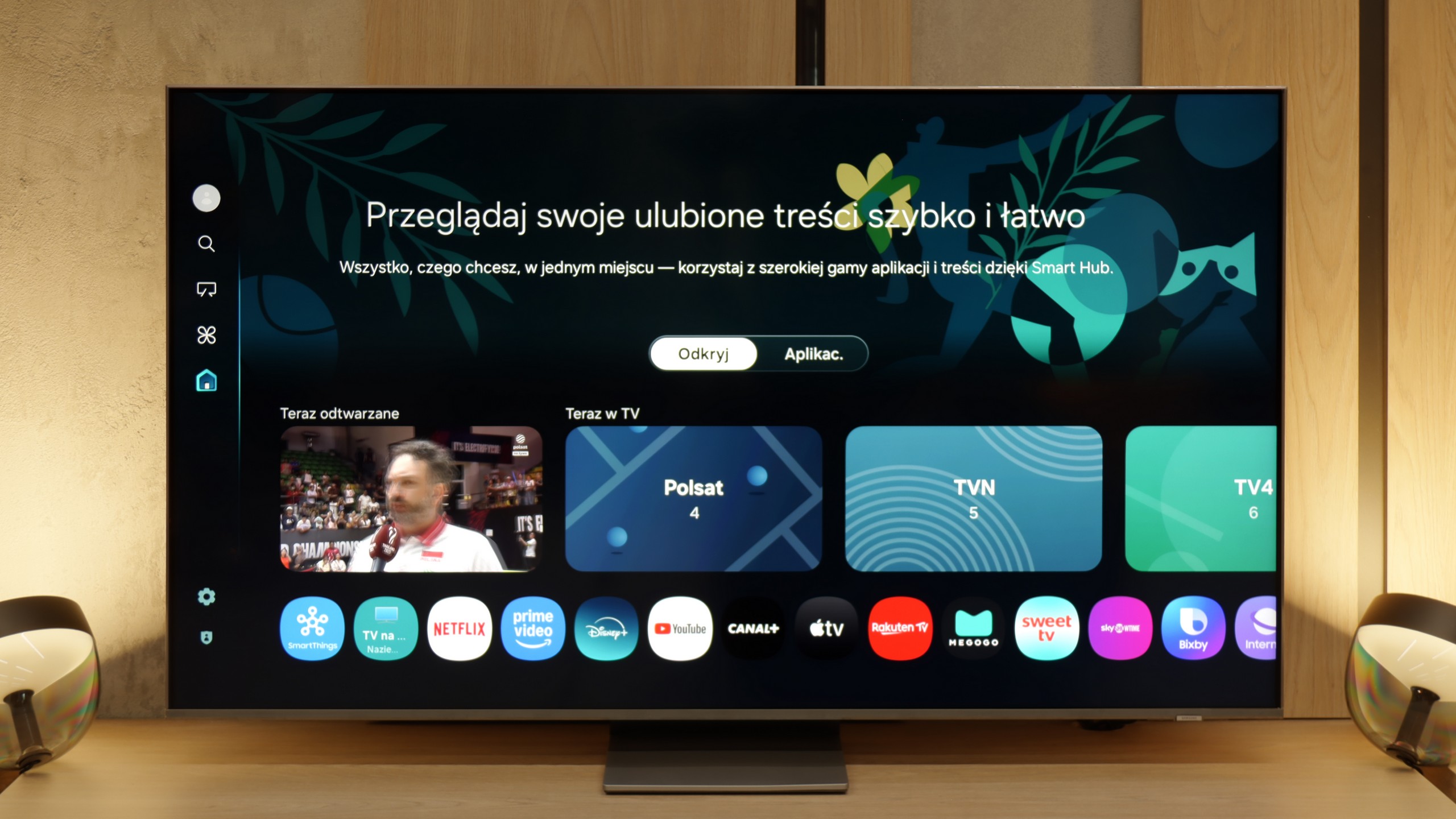
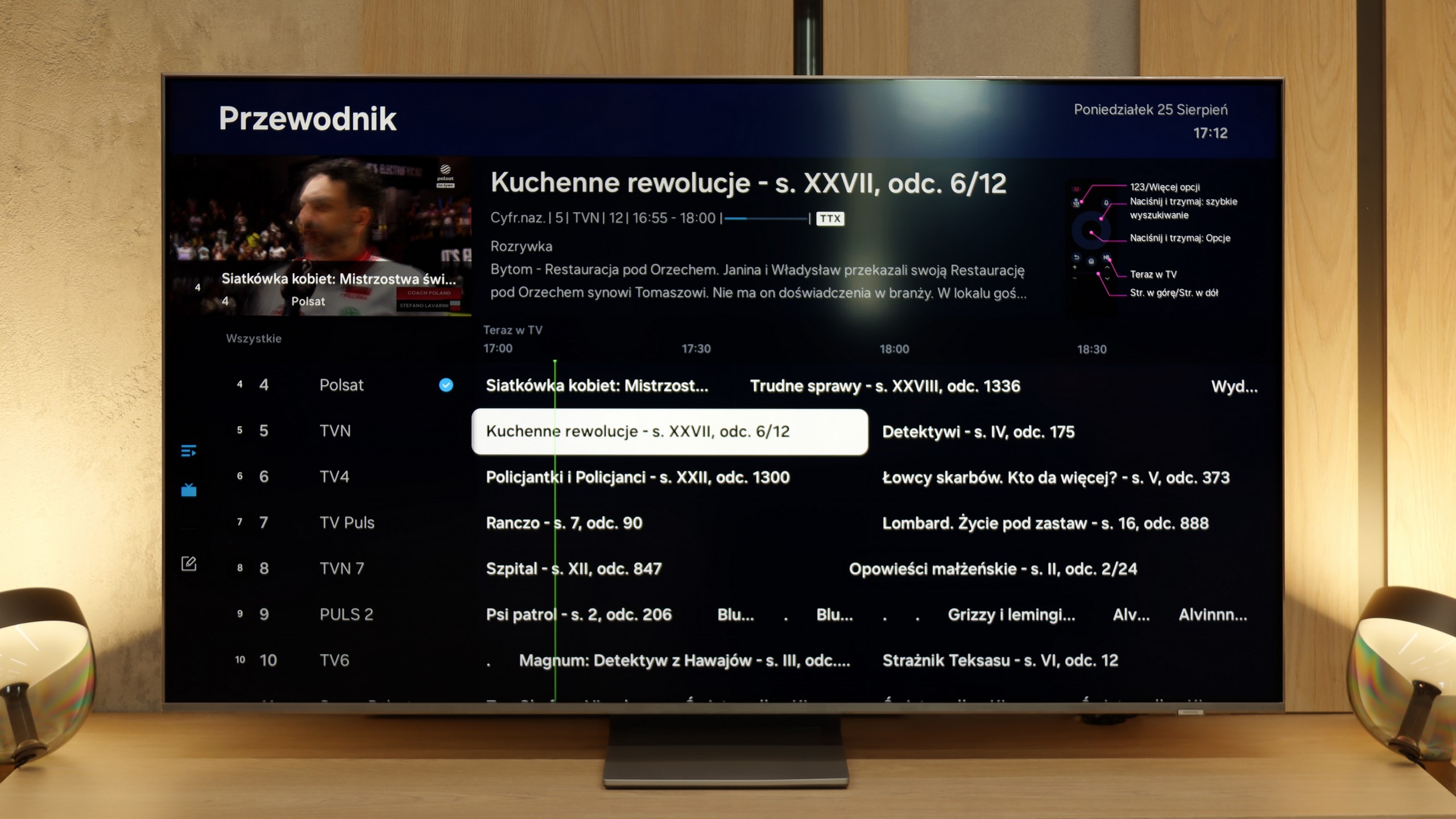
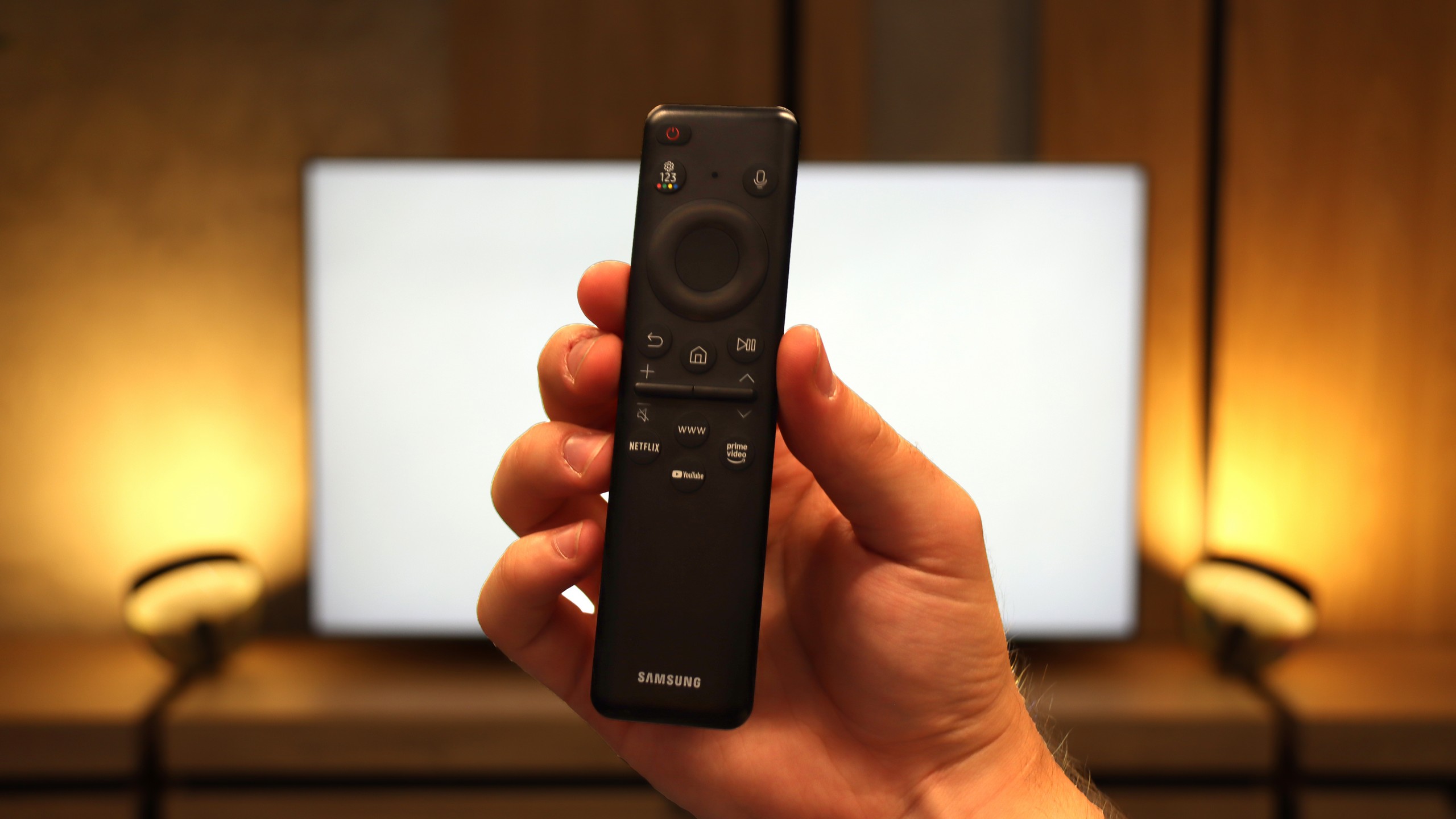
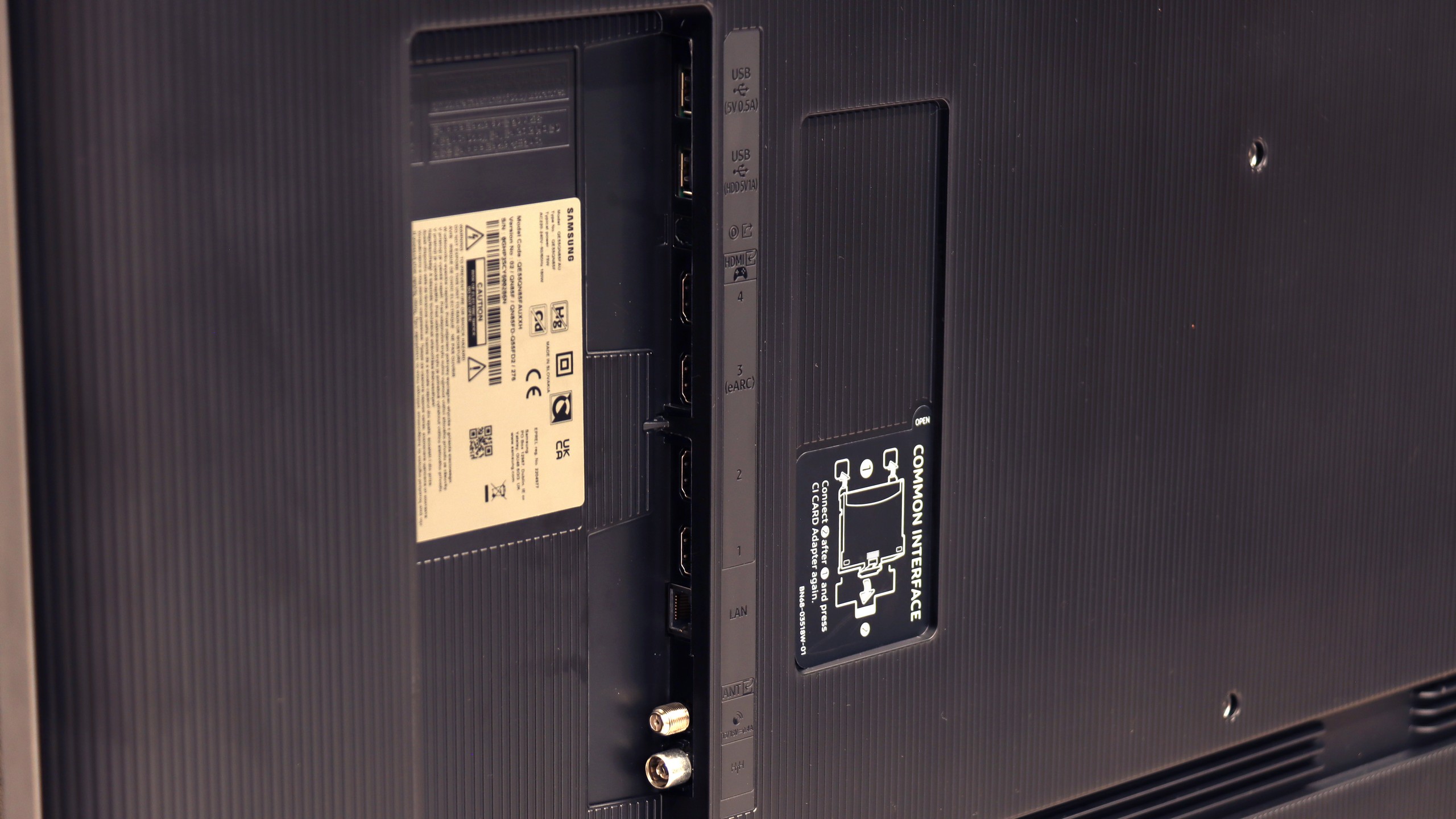
Sony Bravia 8 runs on the Google TV system, which provides a very intuitive and quick experience when using the television, as well as nearly endless app options. Google Assistant operates in Polish, allowing for even better integration with the device. The interface is well-designed, and access to apps and features is simple and convenient. It's also worth mentioning the remote – similar to solutions from Korean competitors, the remote can be charged via a USB-C port. Moreover, it is backlit, which makes it much easier to use in the dark.
The device offers a wide range of capabilities that will satisfy most users. The Sony XR80 television allows for programme recording, as well as easy connection to external peripheral devices via Bluetooth. Unfortunately, it lacks the Picture-in-Picture (PiP) feature, which would allow for simultaneous viewing of two image sources, something that could be useful in certain situations.
The television looks very good. It has a solid metal frame that gives it an elegant appearance. The television stands on two adjustable feet, which can be customised for both width and height. This allows for easy placement of a soundbar beneath the screen. Although the Sony Bravia 8 is not the thinnest OLED television on the market, it presents itself quite well thanks to its careful finish and quality materials.
Smart TV and Tizen System
Samsung QN85F runs on its proprietary operating system Tizen, which has long been one of the strongest points of the Korean manufacturer. The platform operates quickly, is well-developed and provides access to virtually all the necessary applications. Here we have AirPlay support, screen mirroring, voice search, and a very clear interface. Everything is controlled by a remote with a minimal number of buttons, designed to give us quick access to the most important applications.
Classic TV Features
When it comes to classic television features, the QN85F offers a rather basic set. The EPG interface is clear and easy to use, resembling a traditional teletext programme list. A downside is the lack of USB recording and the absence of PiP functionality, which Samsung has offered in many other models. This is because the QN85F uses single tuners. For some people, this may be a disadvantage, but considering how few viewers today use traditional linear television, it won’t matter much to most users.
SmartThings and Device Support
A strong element of the entire platform is the SmartThings app. Thanks to it, we can integrate the TV with other smart home devices – not just those from Samsung. We can connect smart lighting like Philips Hue or Yeelight, video intercoms, and many other devices to the system. SmartThings also allows us to control the TV without using a traditional remote – we can use the app on our smartphone, mouse mode, or gesture control if we have a Samsung watch. This makes the QN85F a part of a larger ecosystem and fits perfectly into the trend of smart IoT homes.
Playing files from USB
8.7/10
9.1/10
Supported photo formats:
Maximum photo resolution:

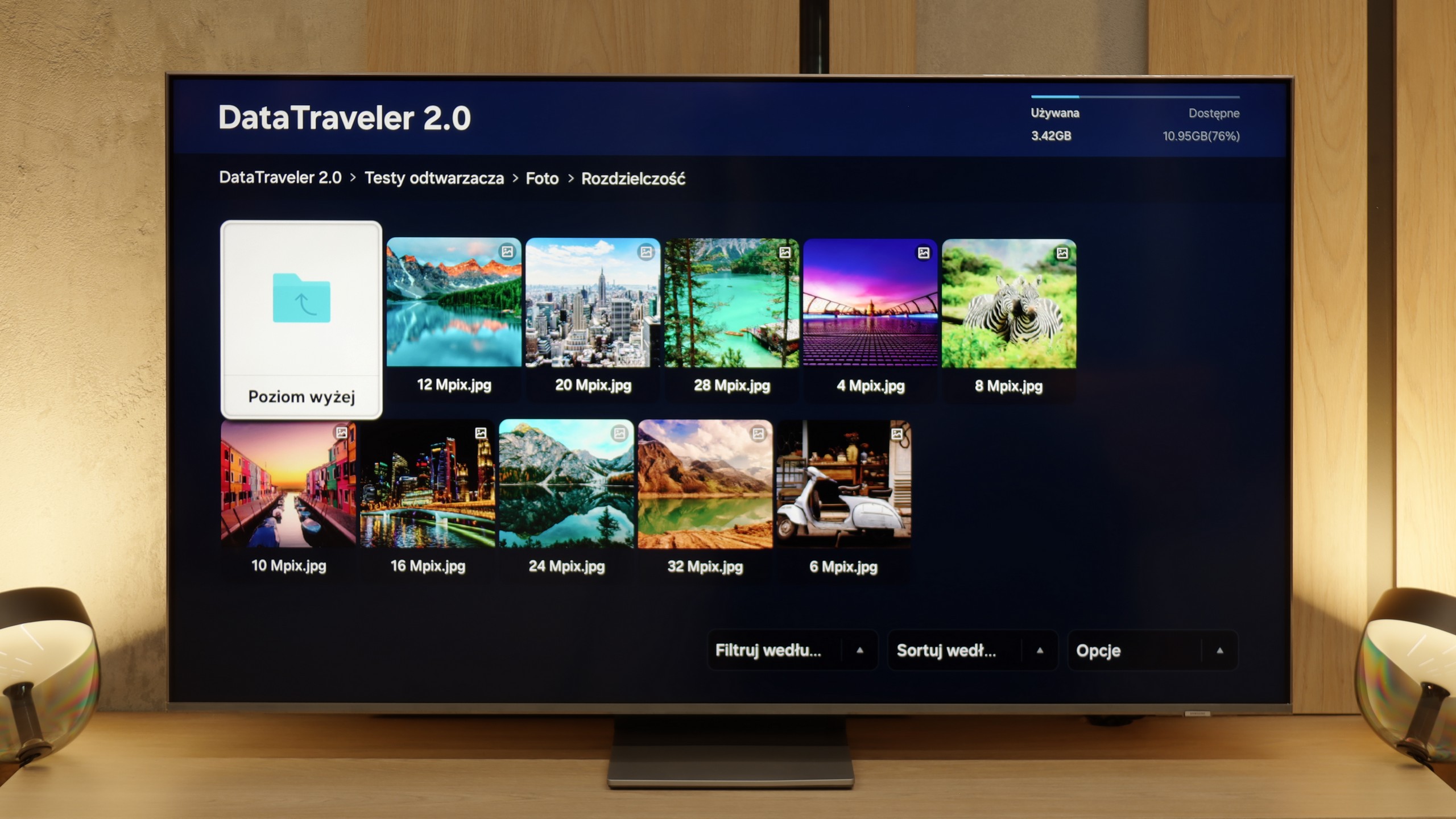
Sony Bravia 8 will satisfy most users when it comes to playing multimedia files. The built-in player handles most popular video and audio formats, allowing for easy access to a wide range of content. While there are some shortcomings in photo playback, the Google TV system allows for the installation of other players that will likely solve this issue.
The player in the QN85F works as most people expect, supporting practically all popular formats and is comfortably sufficient even for more demanding users. Movies, music, photos – everything runs without any issues. The only hiccup occurs with HEIC files, which are photos from Apple devices. According to the specifications, they should work, but in practice, they simply do not open. Thumbnails are visible, but the file itself refuses to launch. This looks like a common software bug. Aside from that one case, the player performs correctly and gives no reasons for complaints.
Apps
9.6/10
8.7/10














































Sound
7.5/10
7.6/10
- Maximum volume-84dB
- Dolby Digital Plus 7.1
- Dolby True HD 7.1
- Dolby Atmos in Dolby Digital Plus (JOC)
- Dolby Atmos in Dolby True HD
- DTS:X in DTS-HD MA
- DTS-HD Master Audio
Bravia 8 is equipped with a sound system with a power of 50W in a 2.2.1 configuration. The speakers are mounted behind the screen, and this system is called Acoustic Surface Audio. The sound is pleasant and well-balanced, making it a perfect complement to the picture. When it comes to audio format support, Sony Bravia 8 has plenty to boast about – in our tests, it played all popular codecs without any issues, providing a full and rich audio experience.
The Samsung QN85F is equipped with a 2.2 system with a power output of 40 W, and it performs really well for built-in speakers. The bass is pleasant, and the dialogue is clear and easy to hear even during louder scenes. Even at maximum volume, the TV doesn't experience any unwanted vibrations, and nothing rattles. At the bottom of the cabinet, there is a woofer responsible for the bass – therefore, when installing, it's important to ensure it isn't obstructed.
As for formats, the QN85F does not support DTS:X audio, which for Samsung has been a standard for several years now and forces Blu-ray enthusiasts to connect audio devices first to the home theatre system and then to the TV. However, in return, we get support for the more popular Dolby Atmos format, which can add extra depth to the sound of movies and series.
Acoustic Measurements
No acoustic data
84dBC (Max)
75dBC


